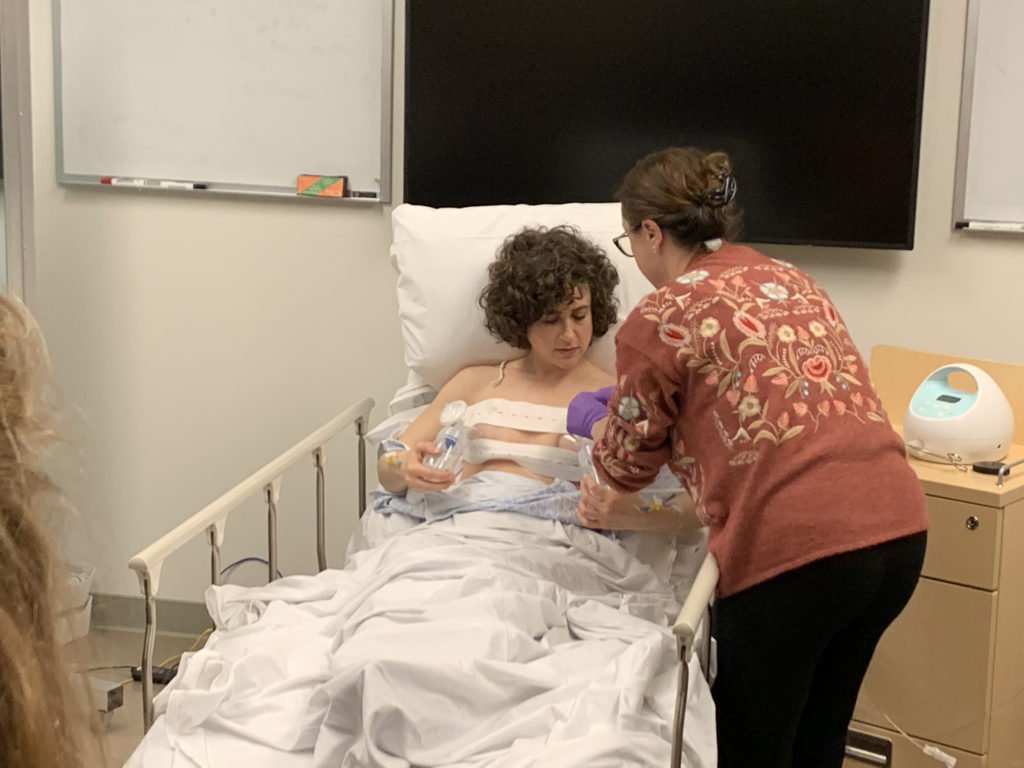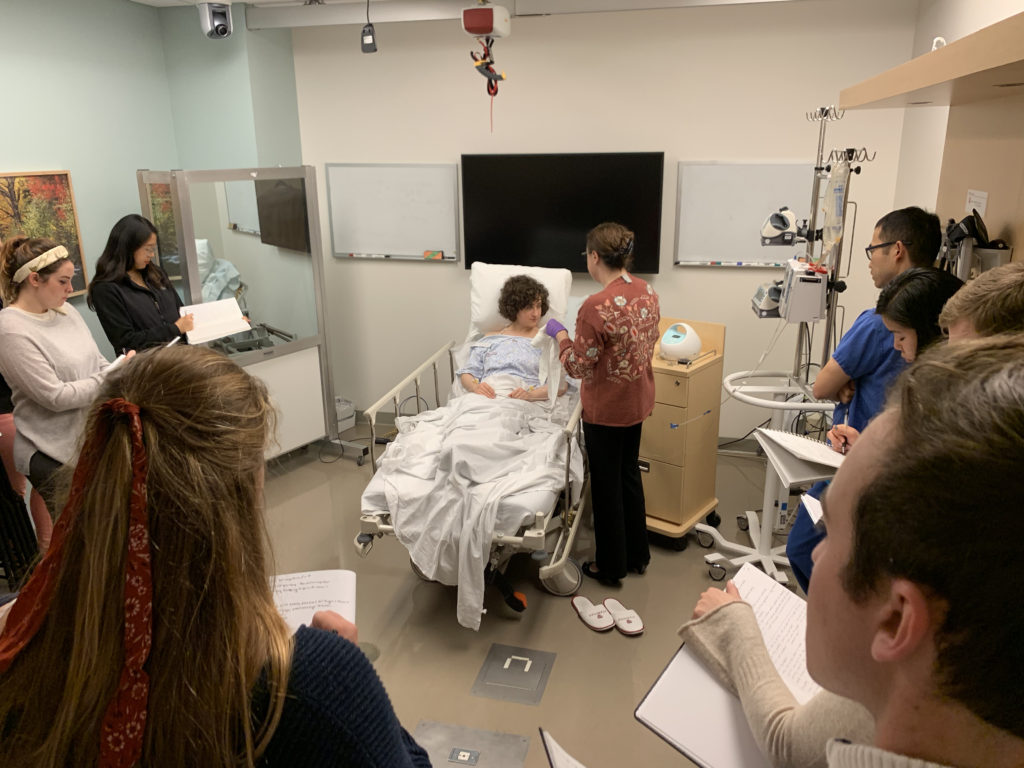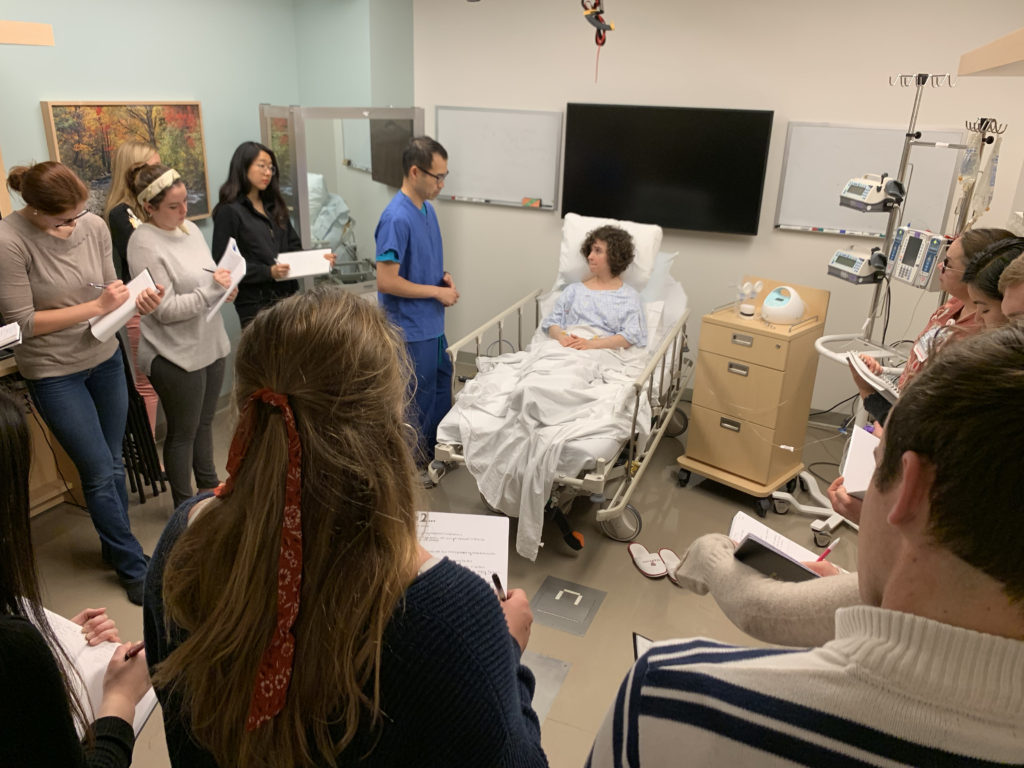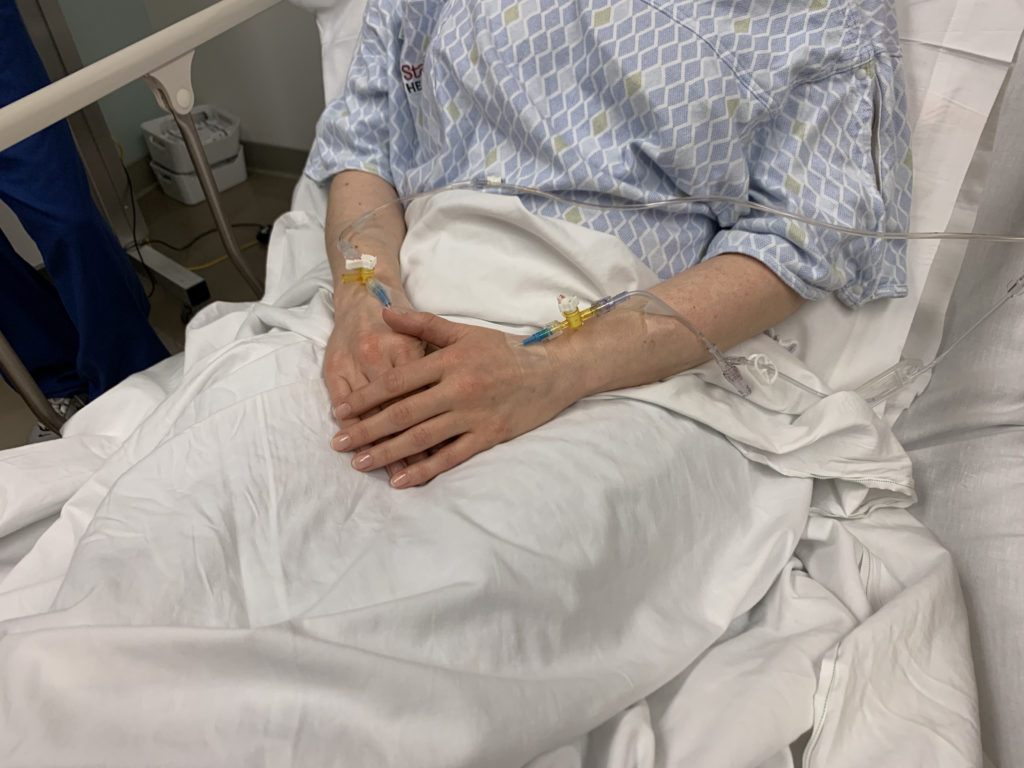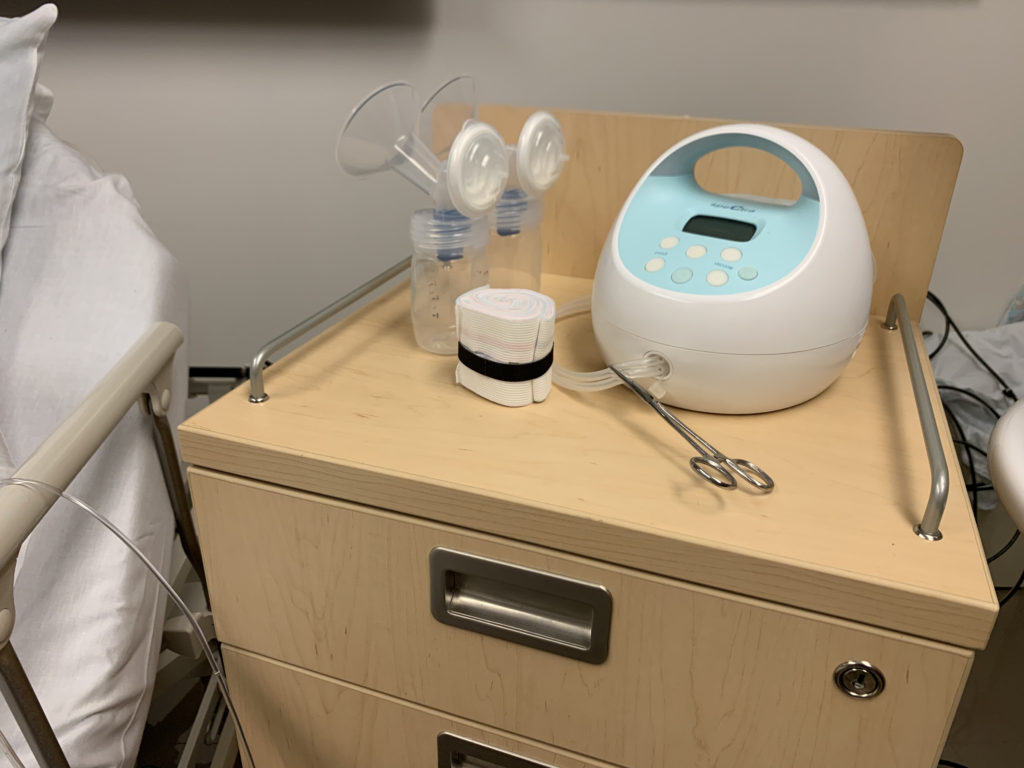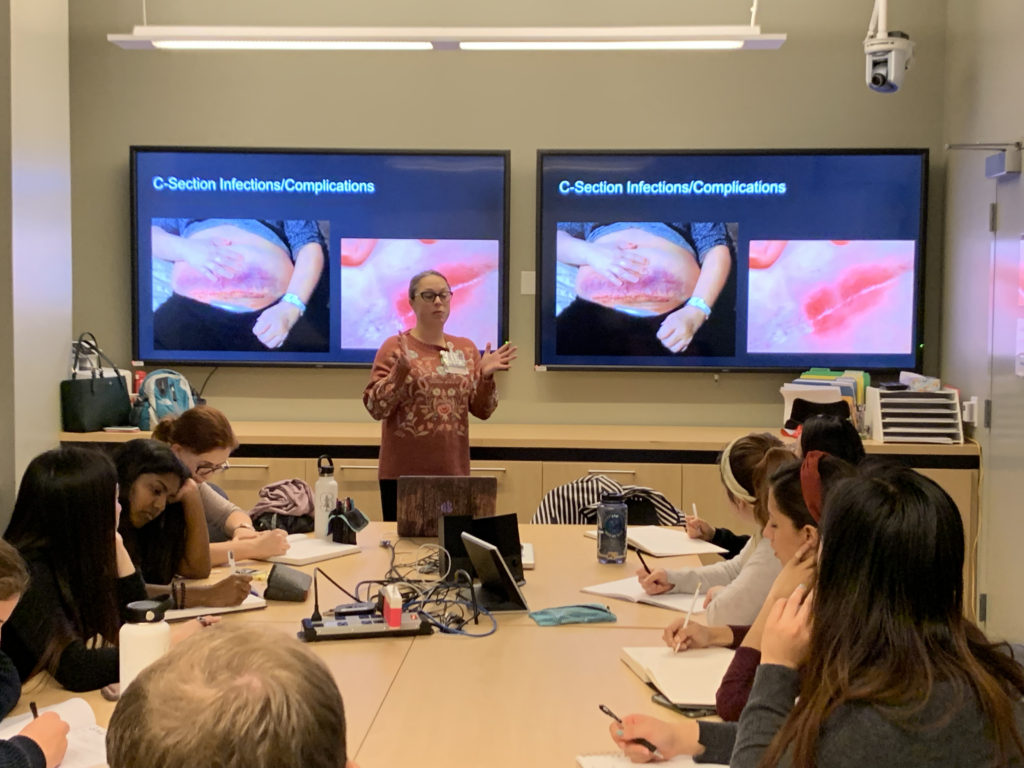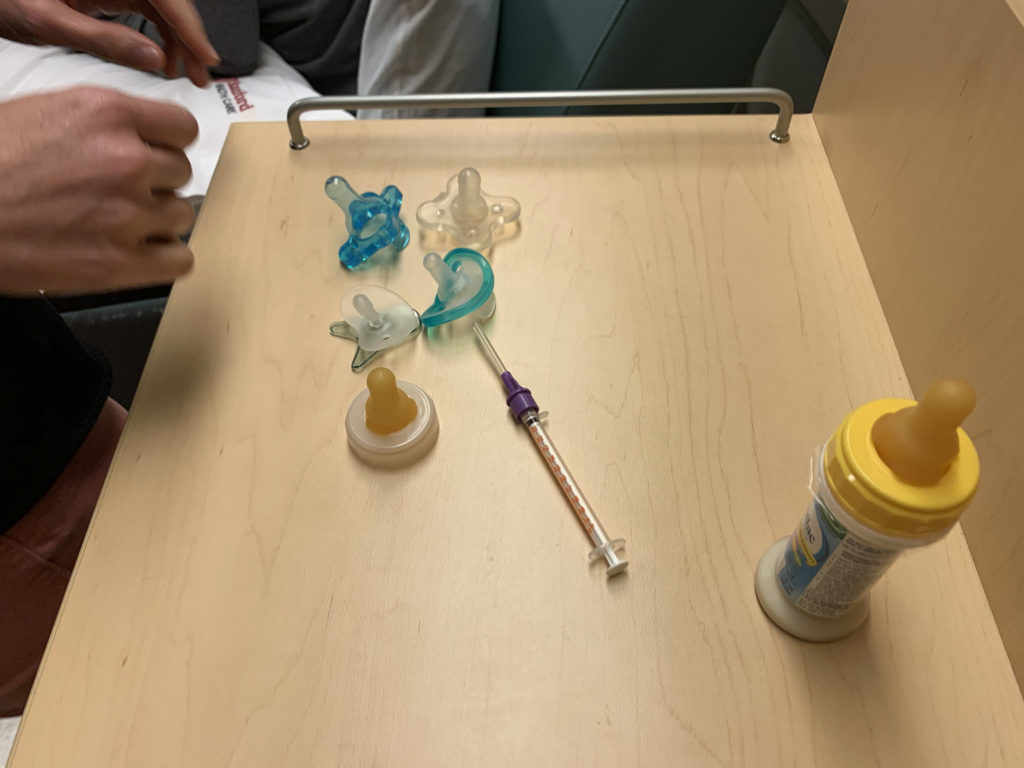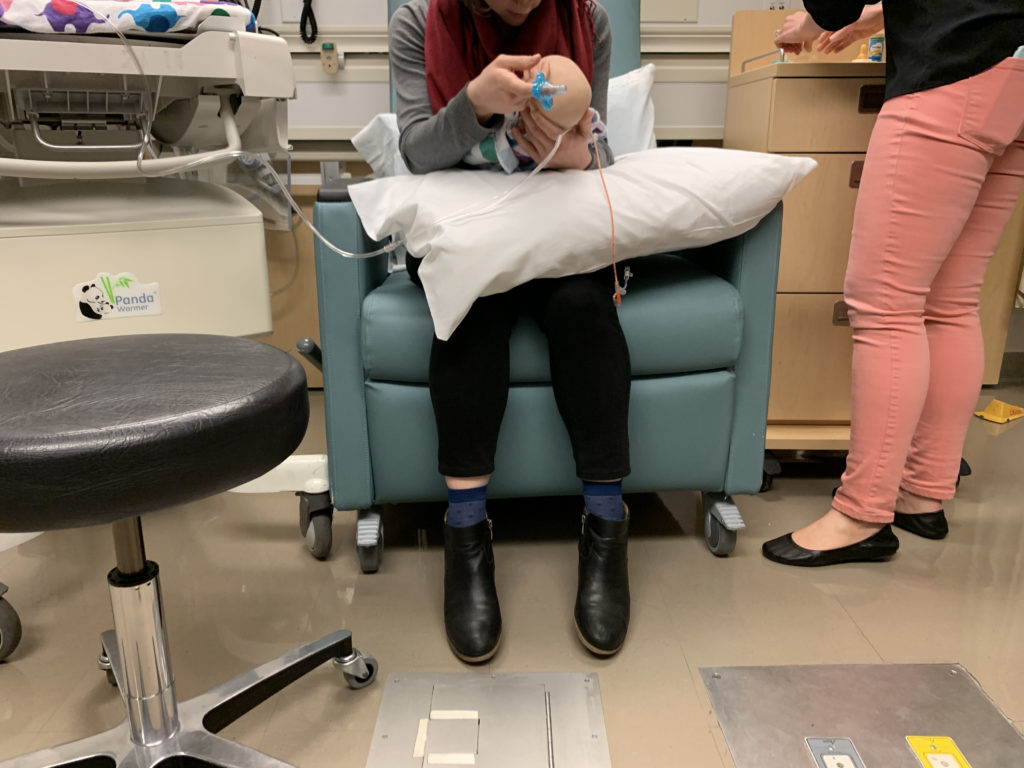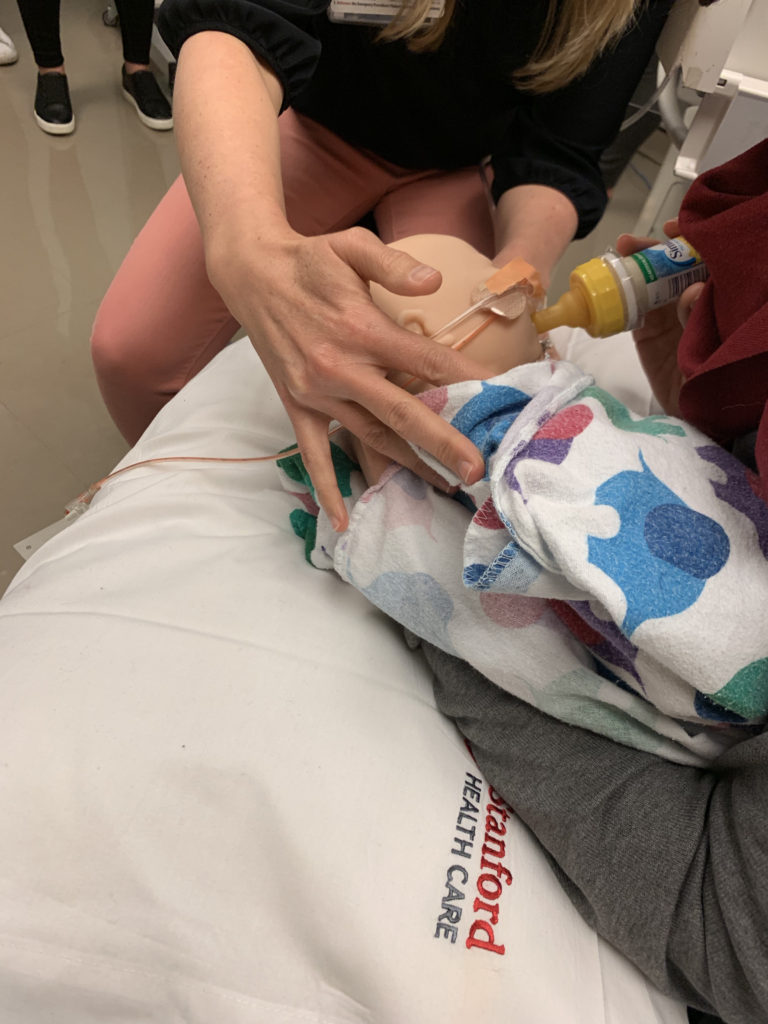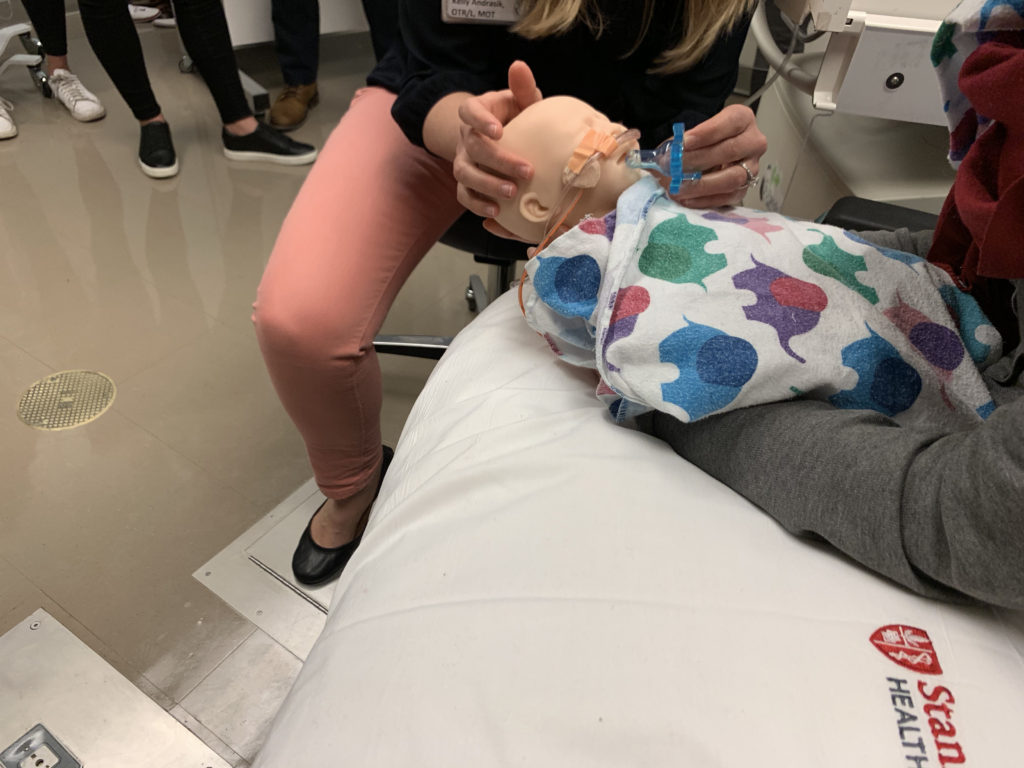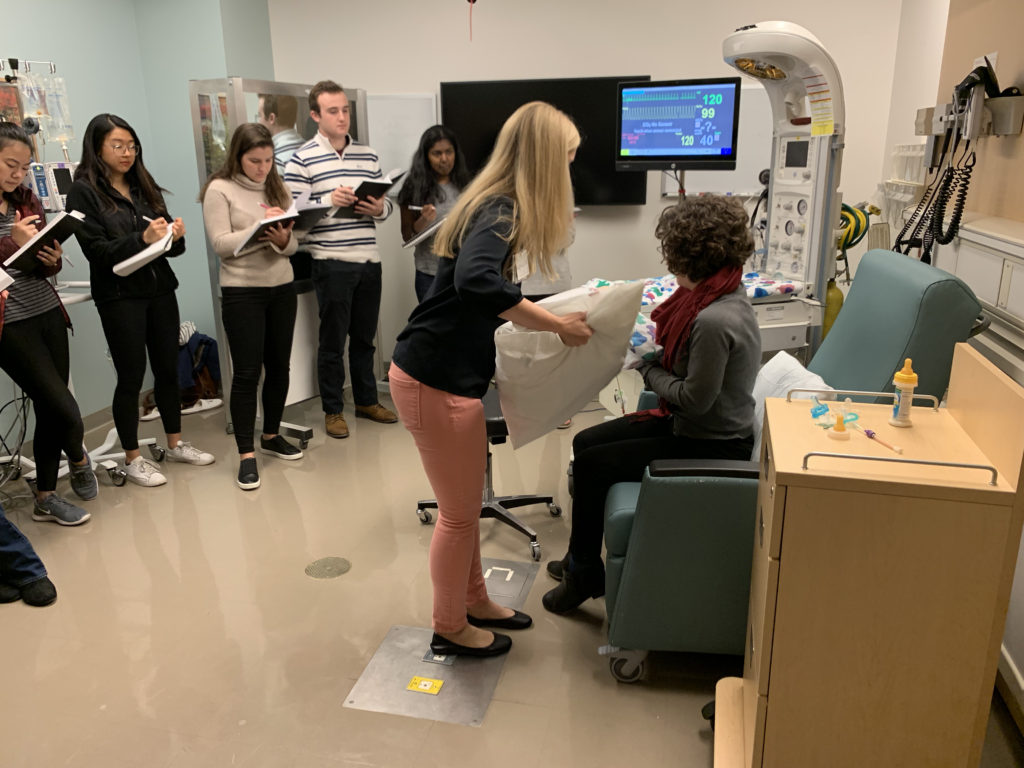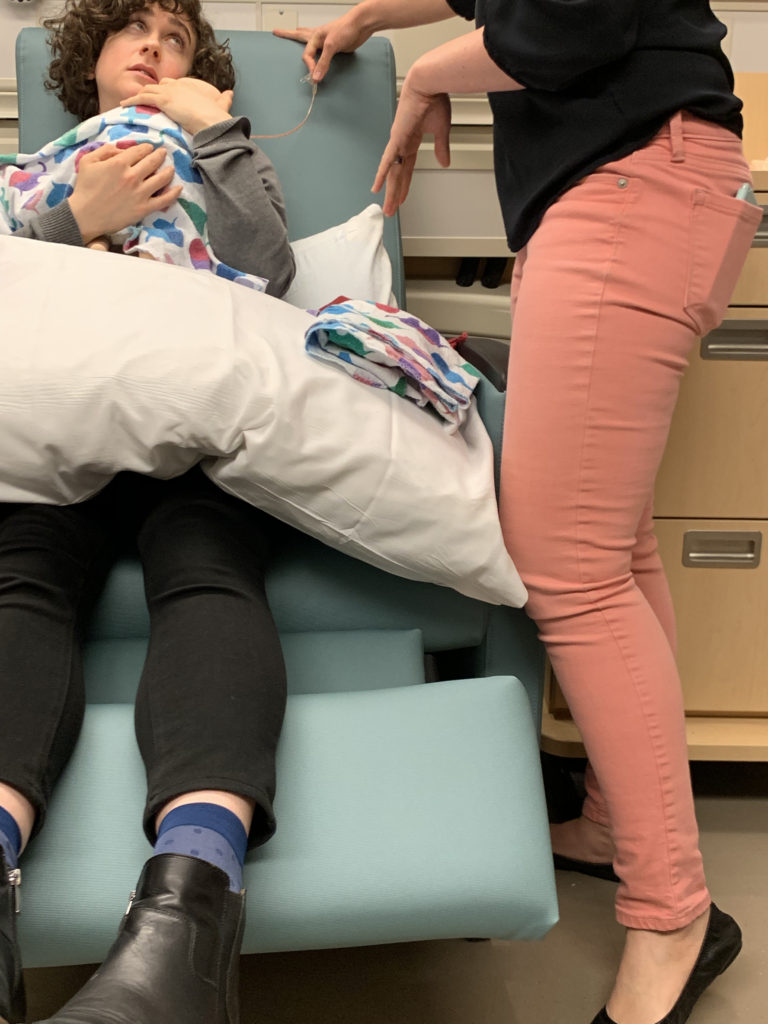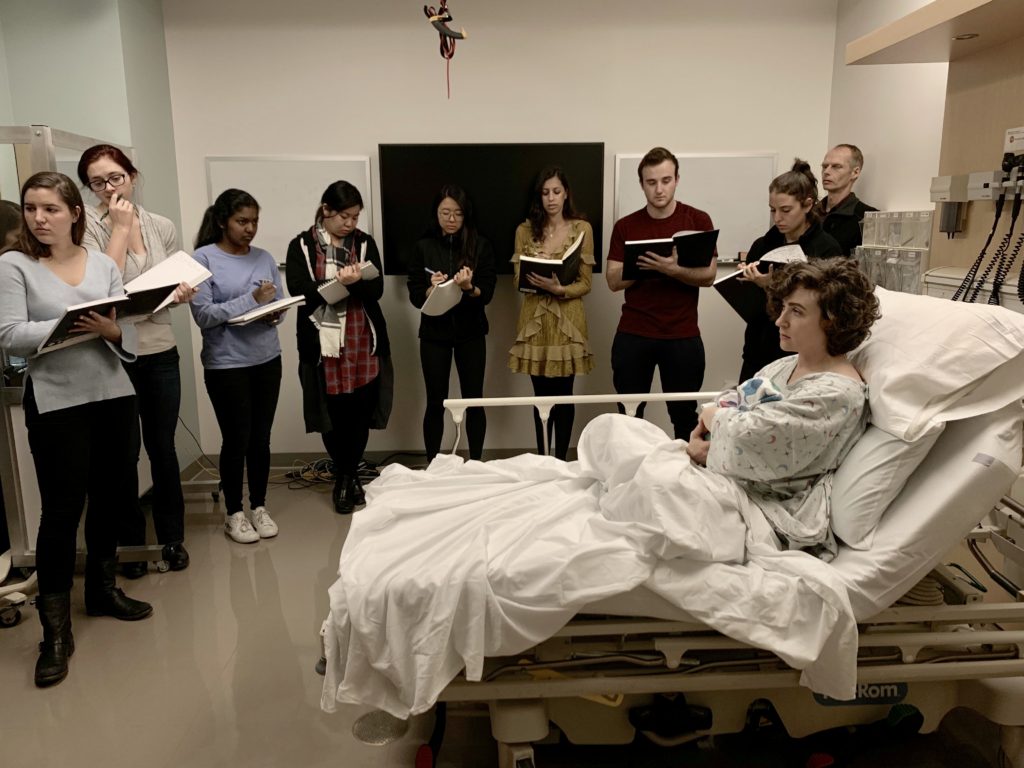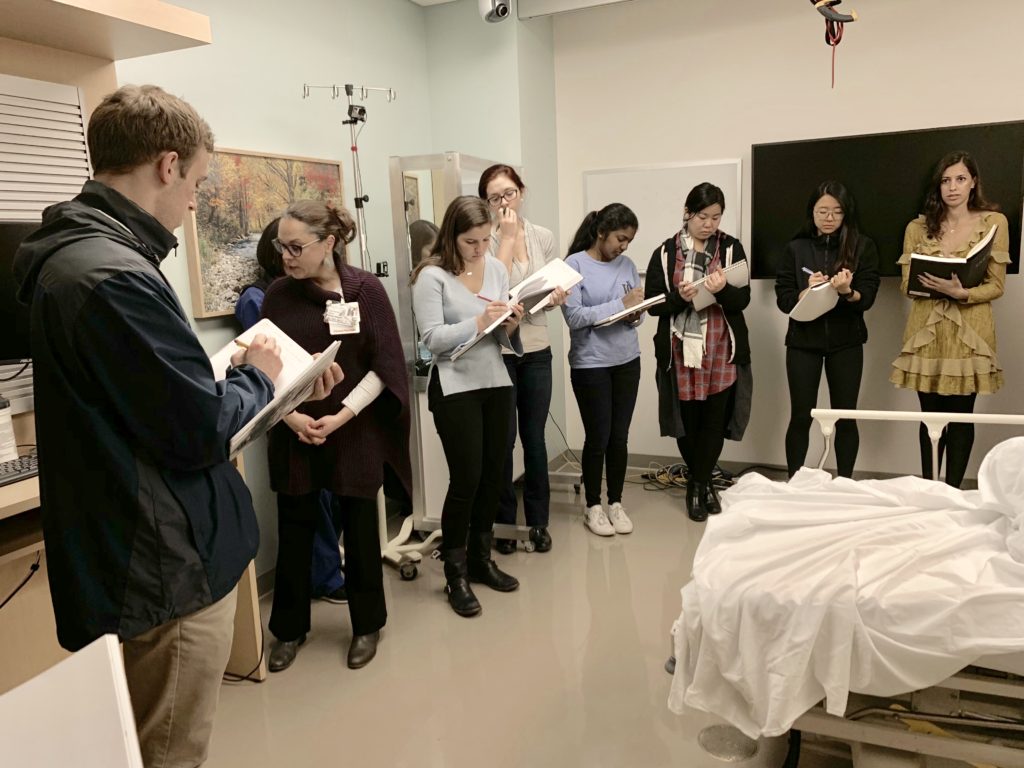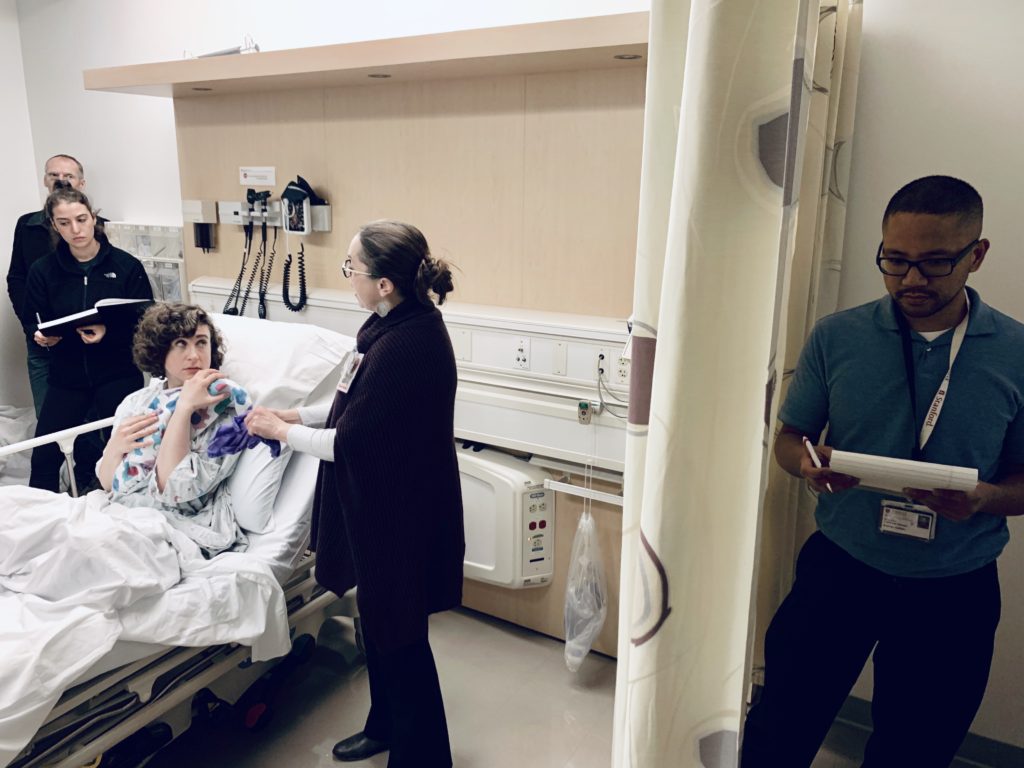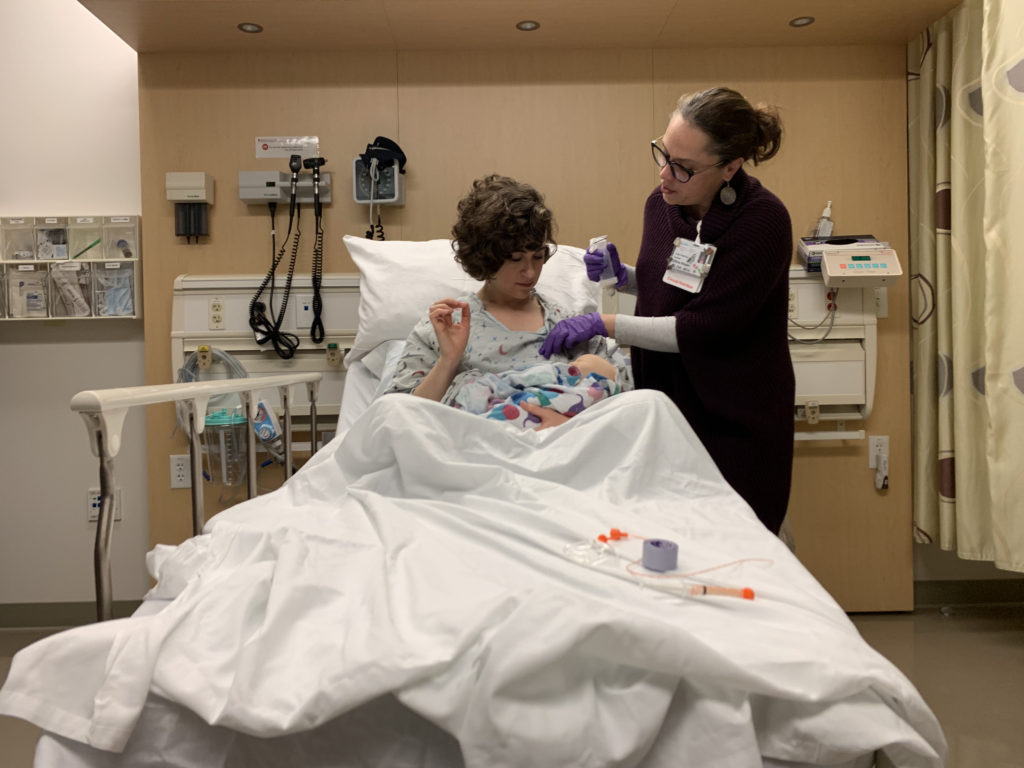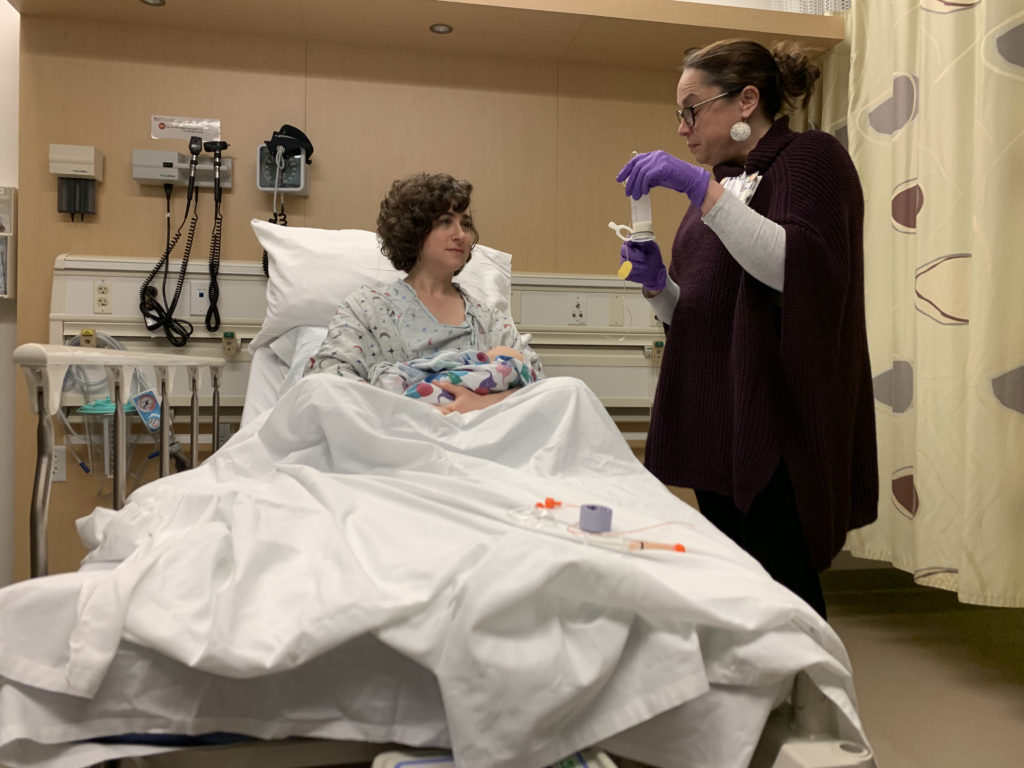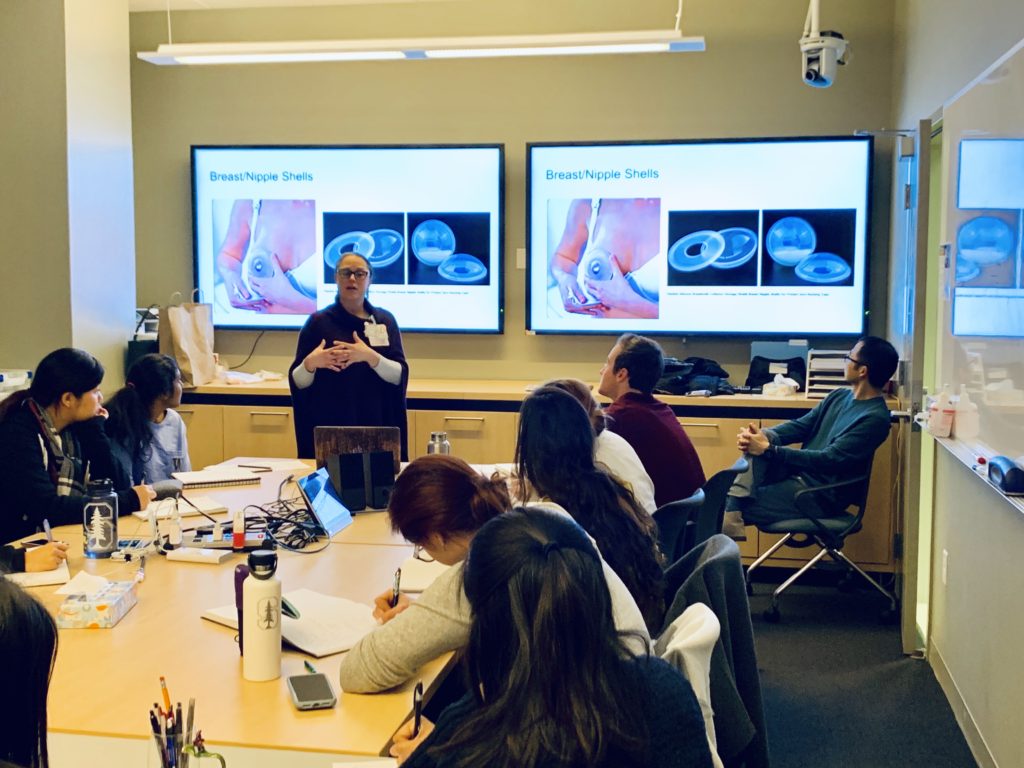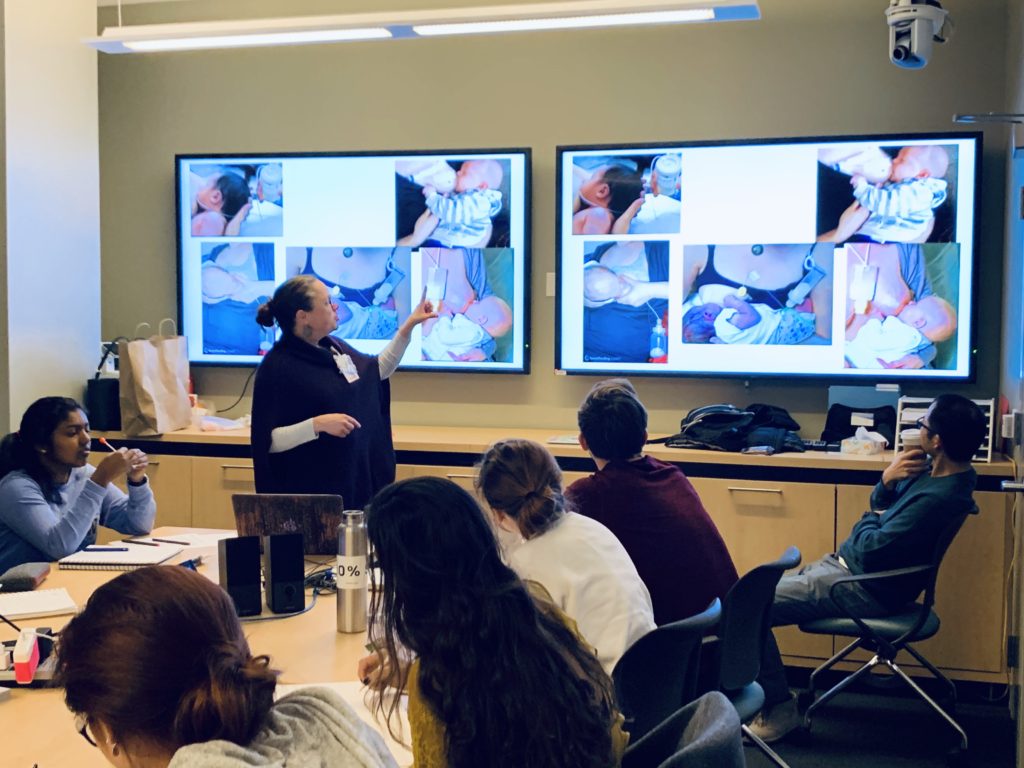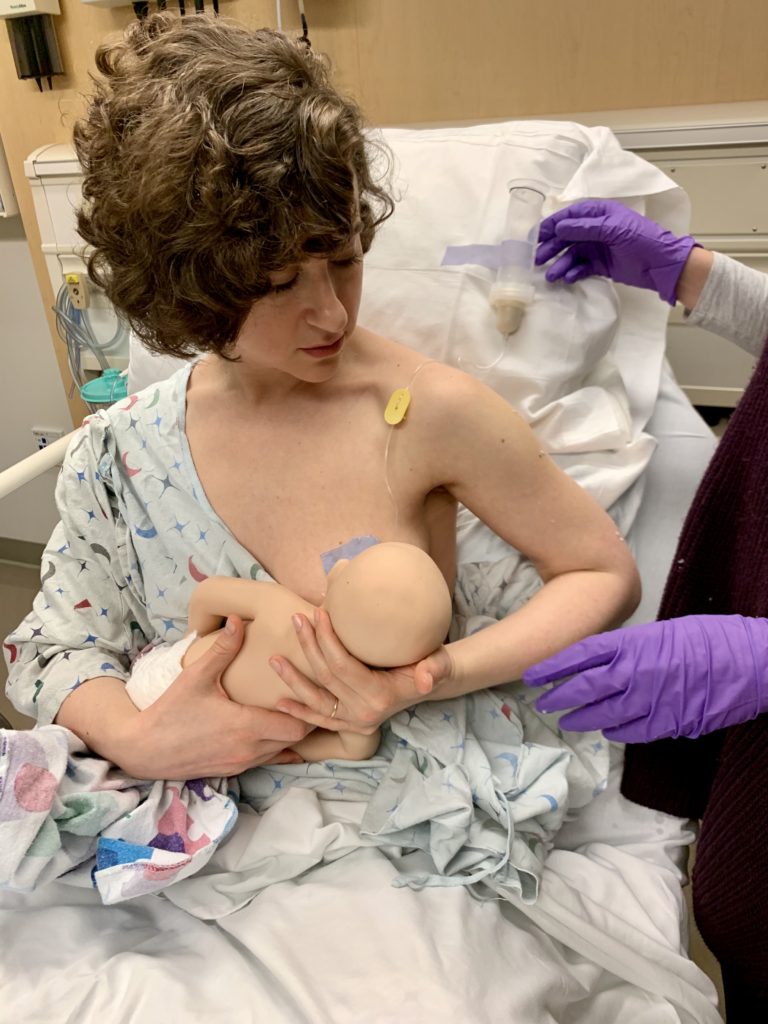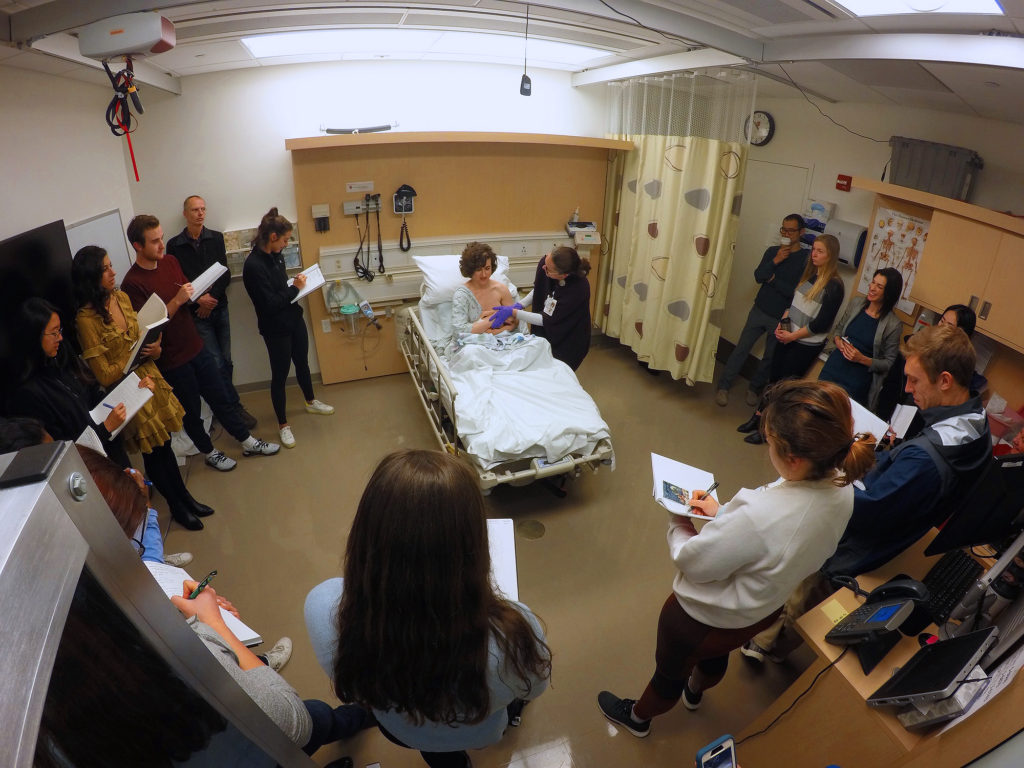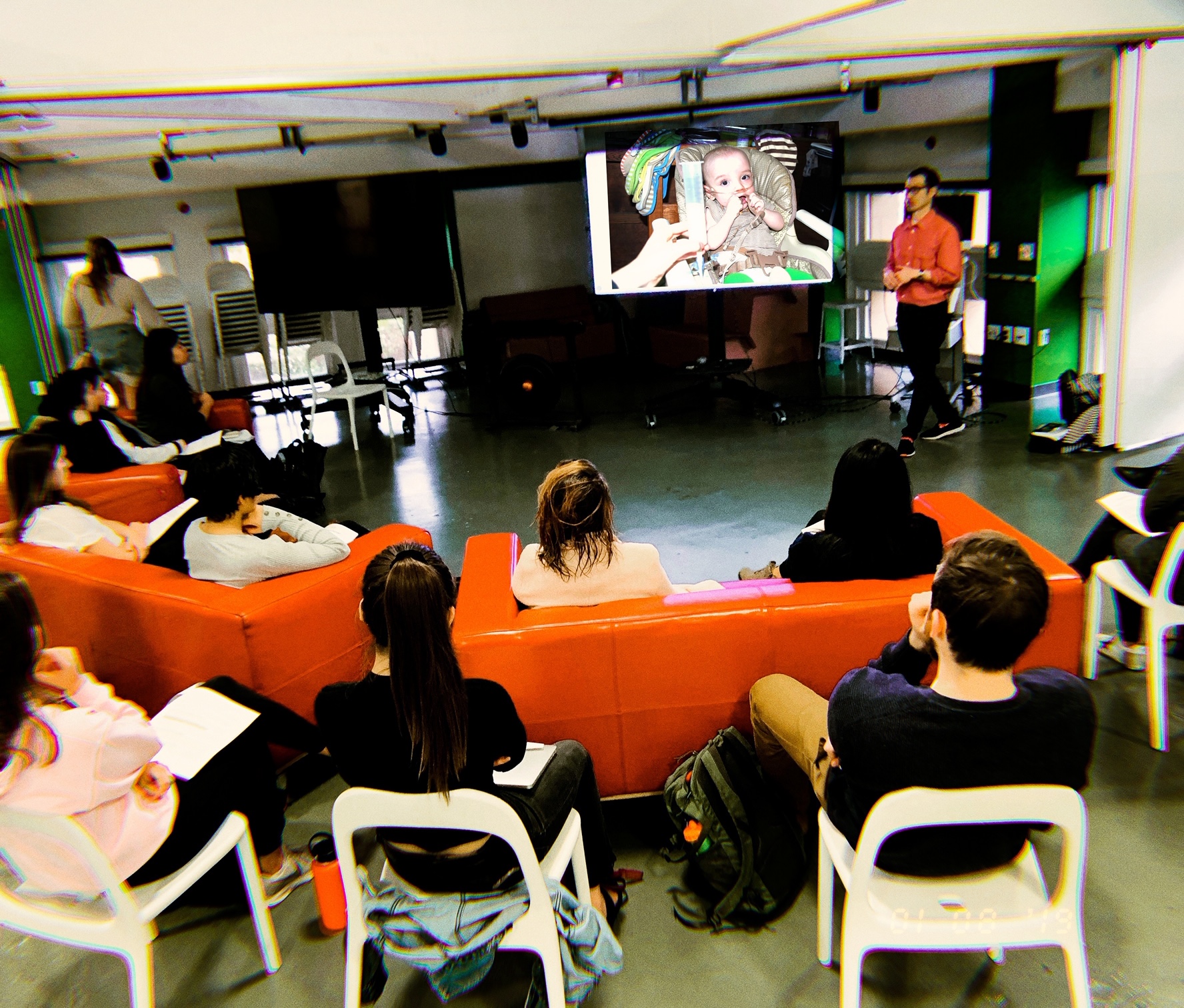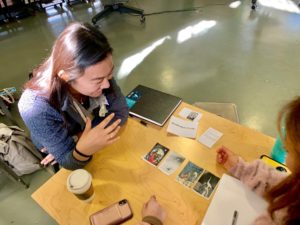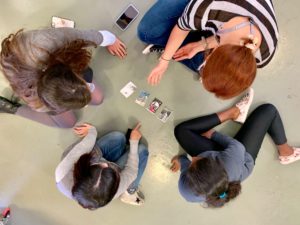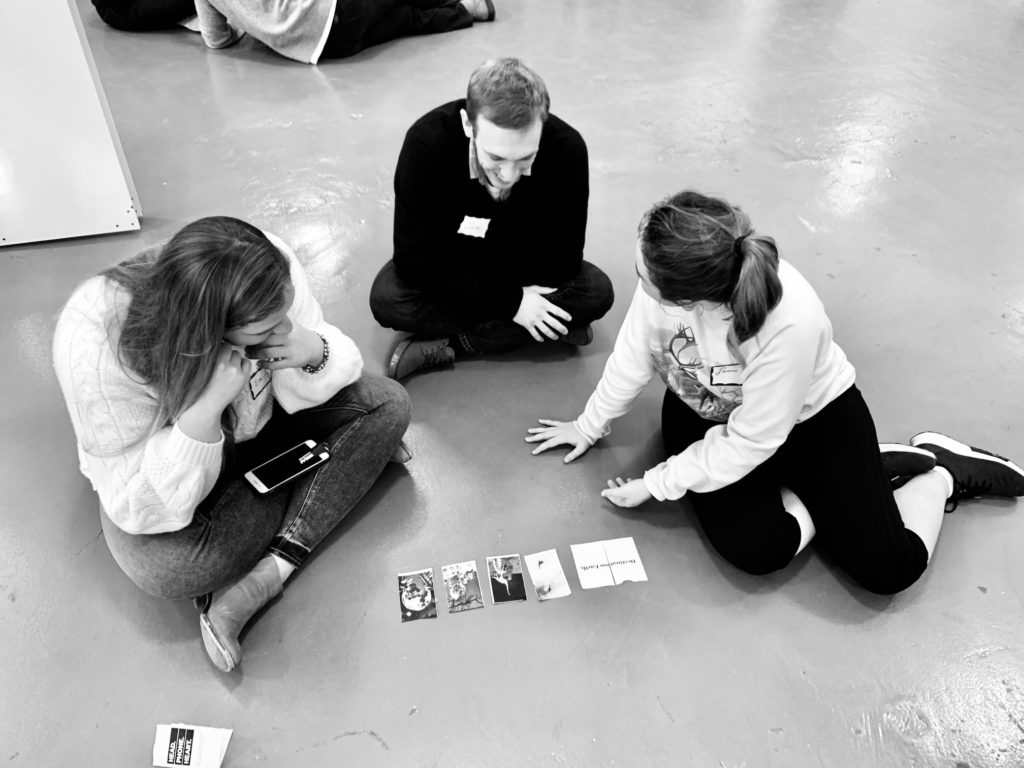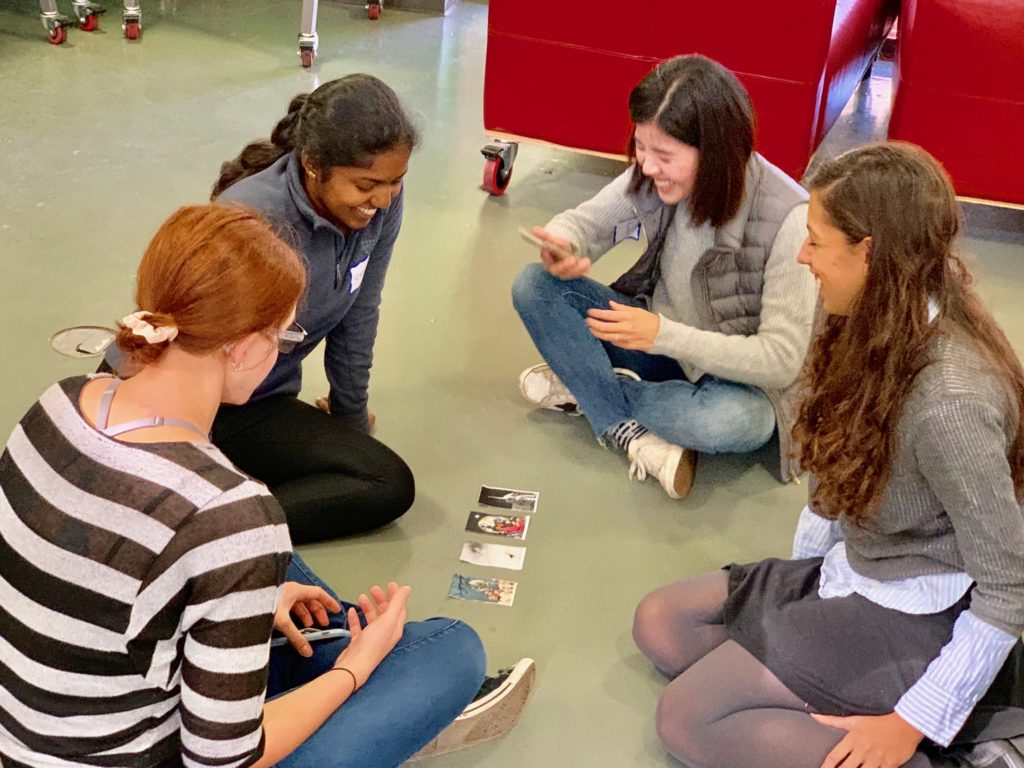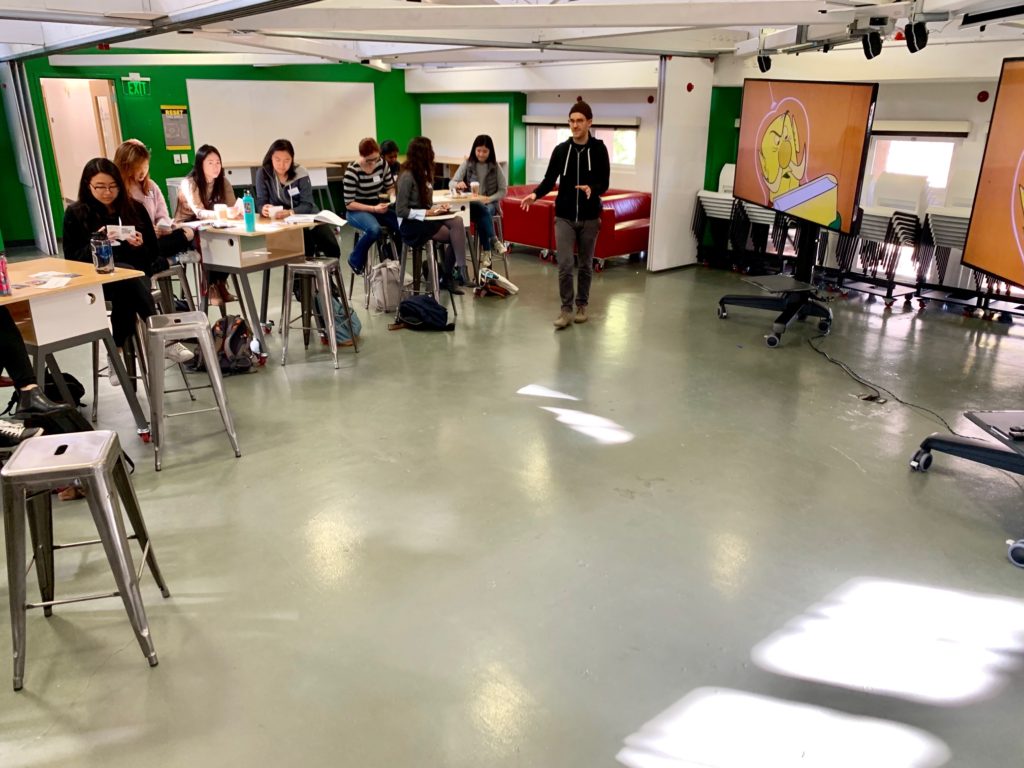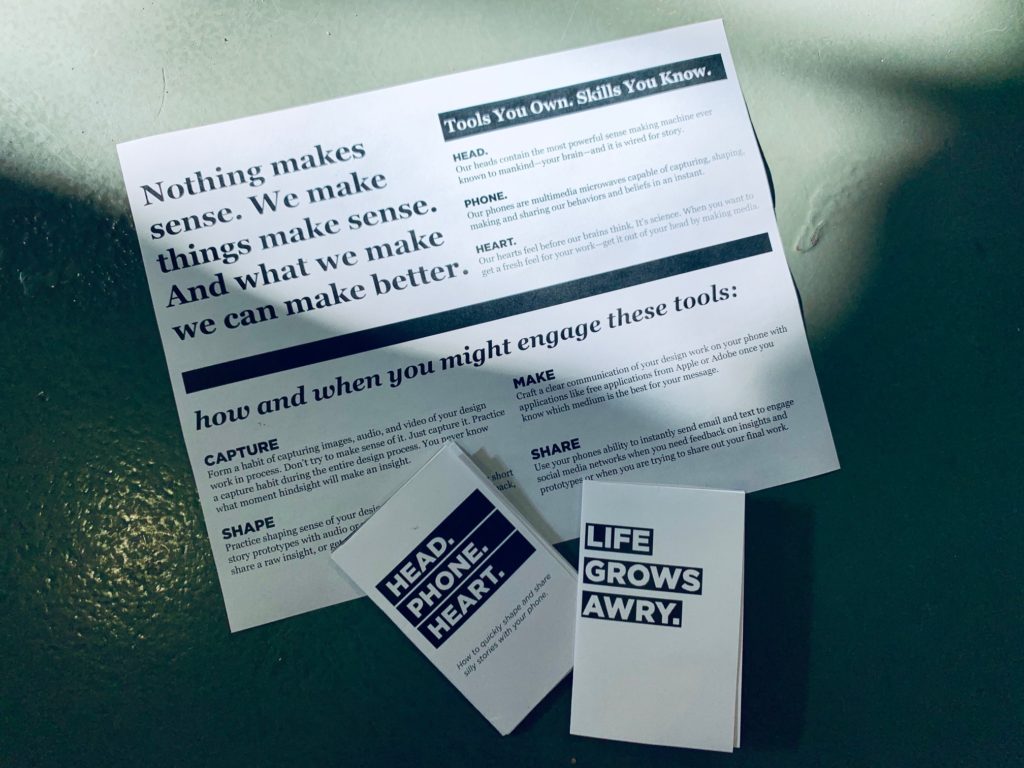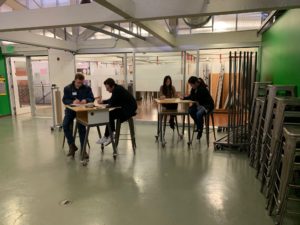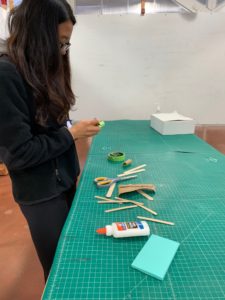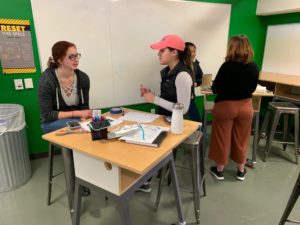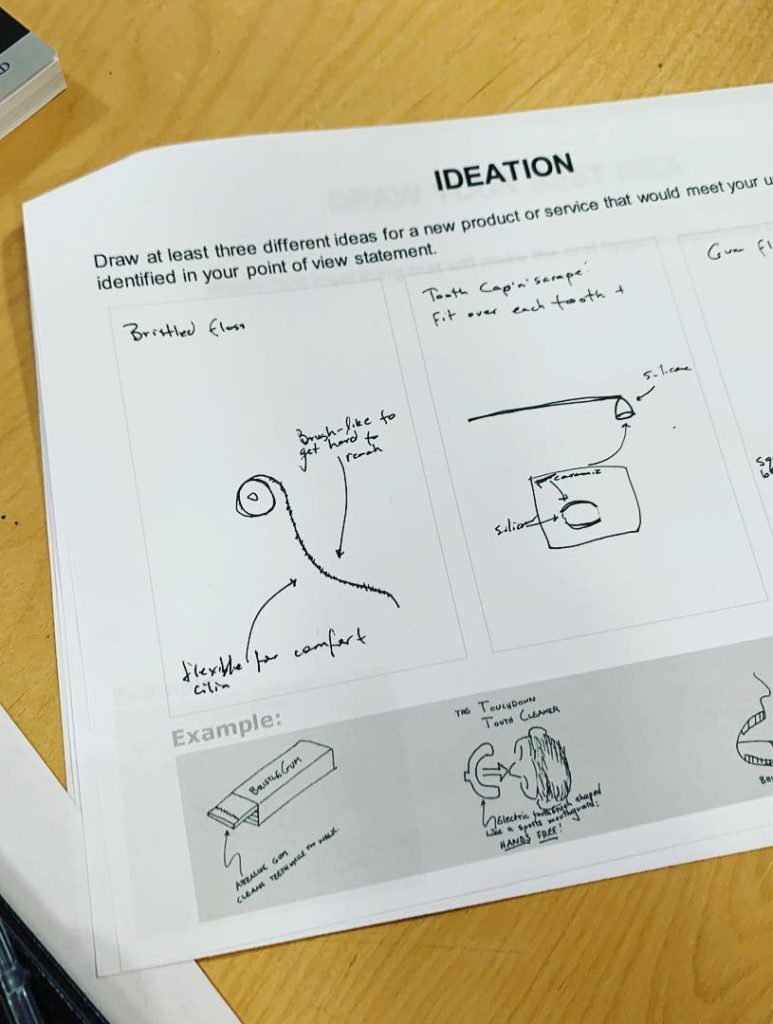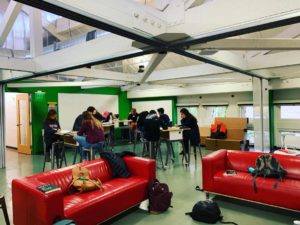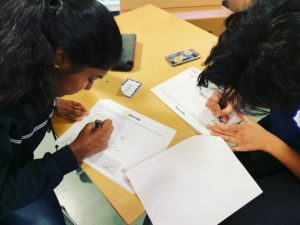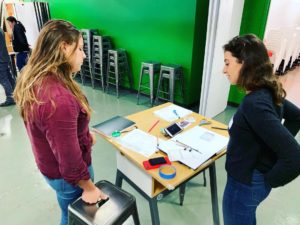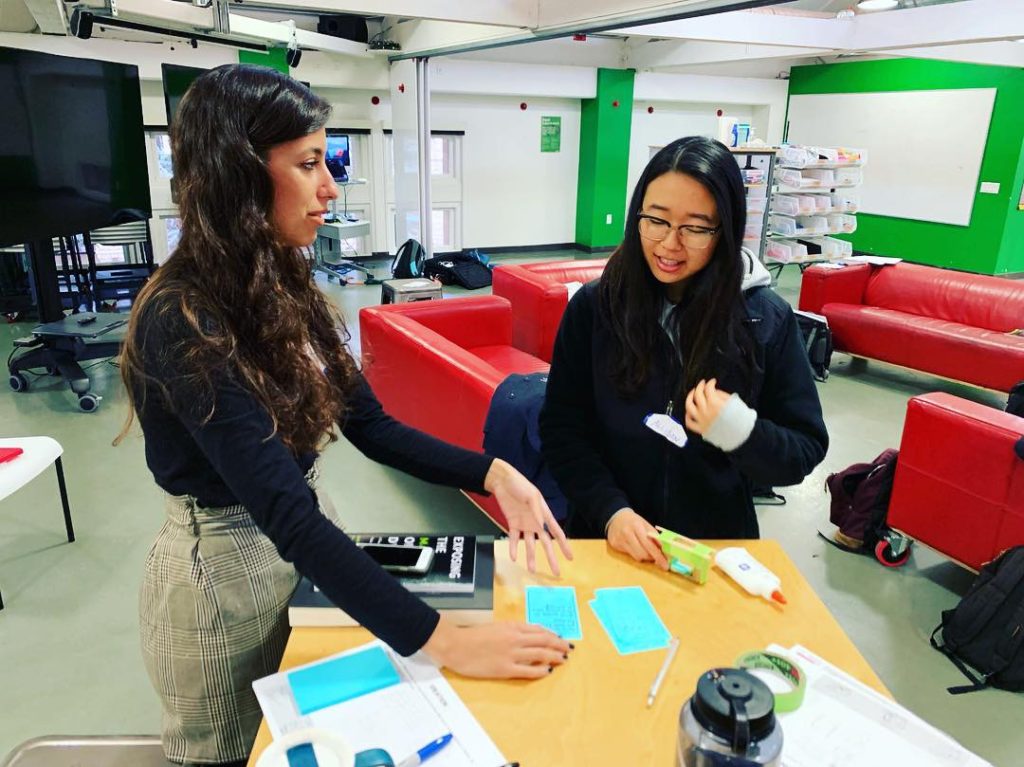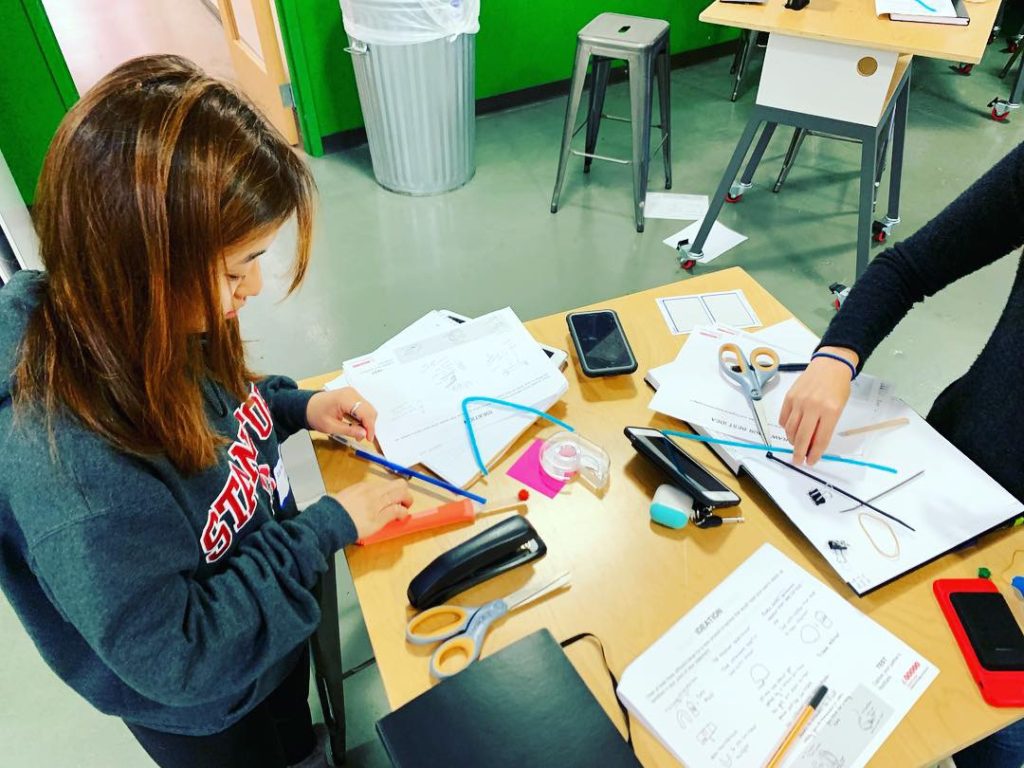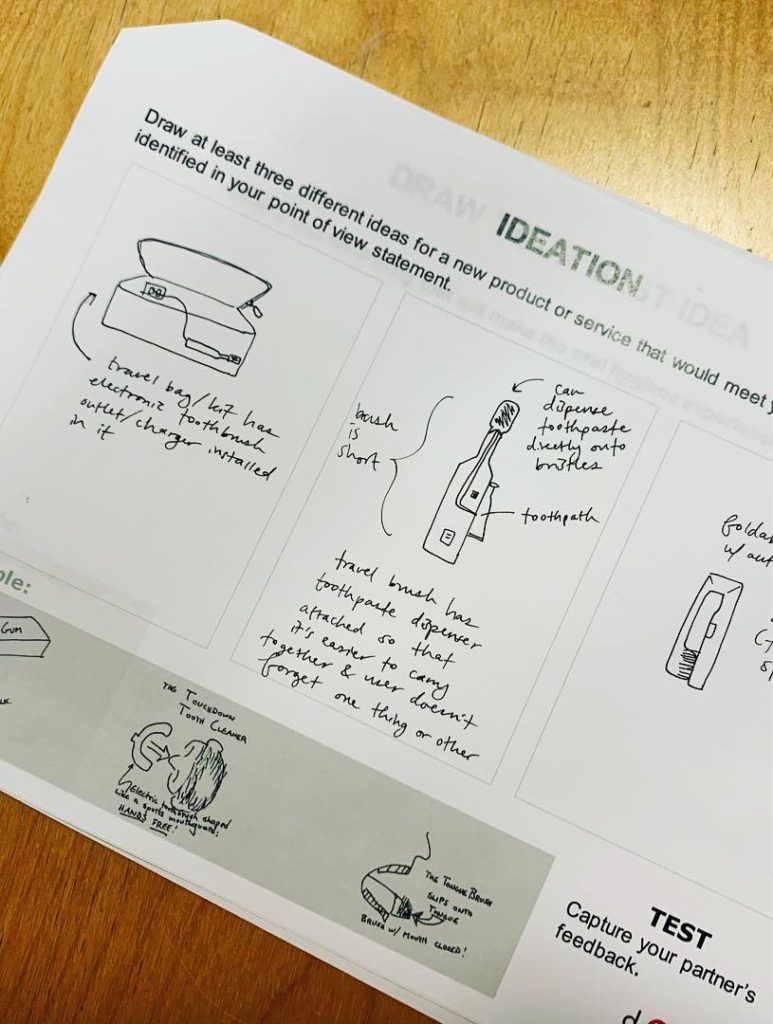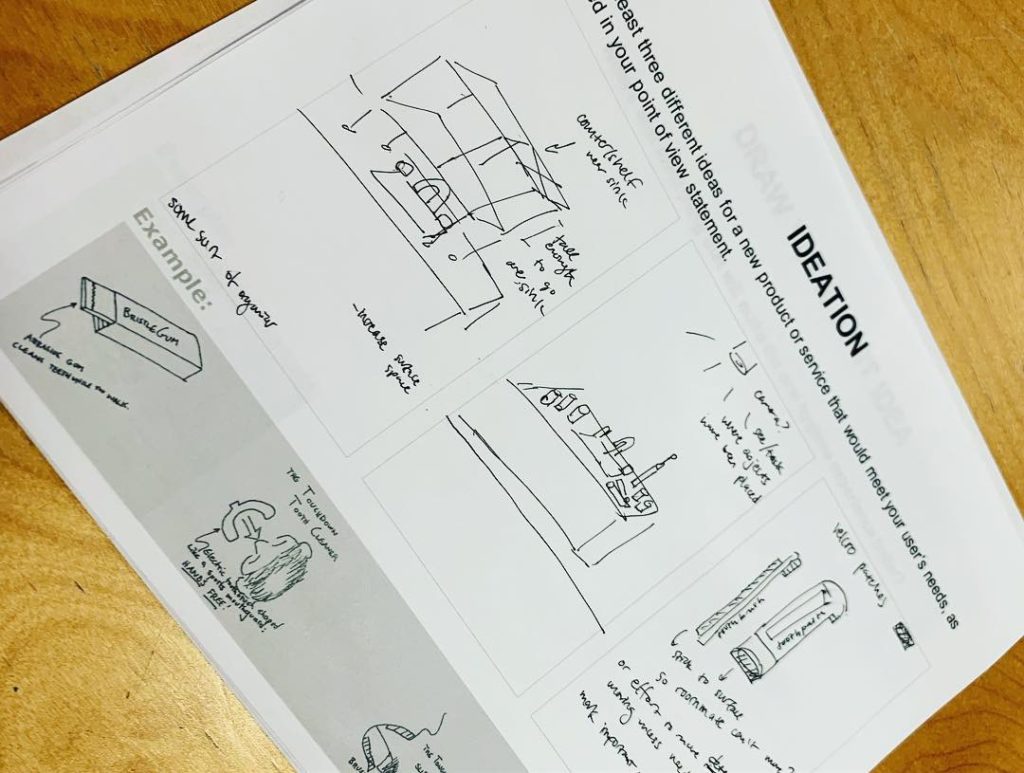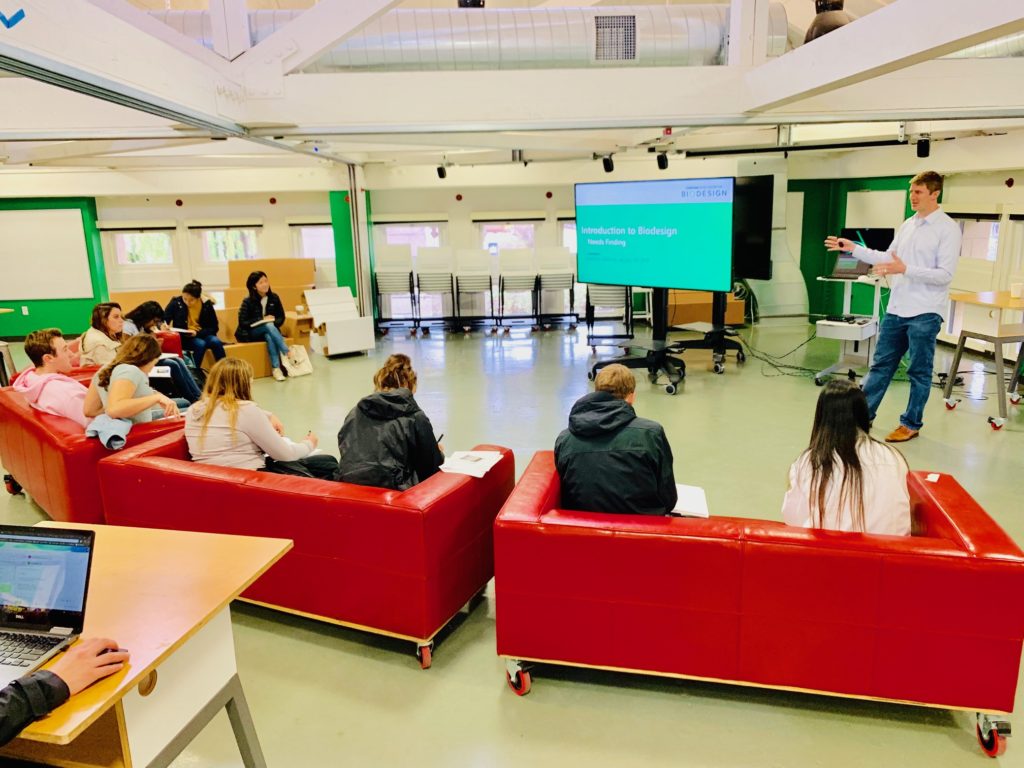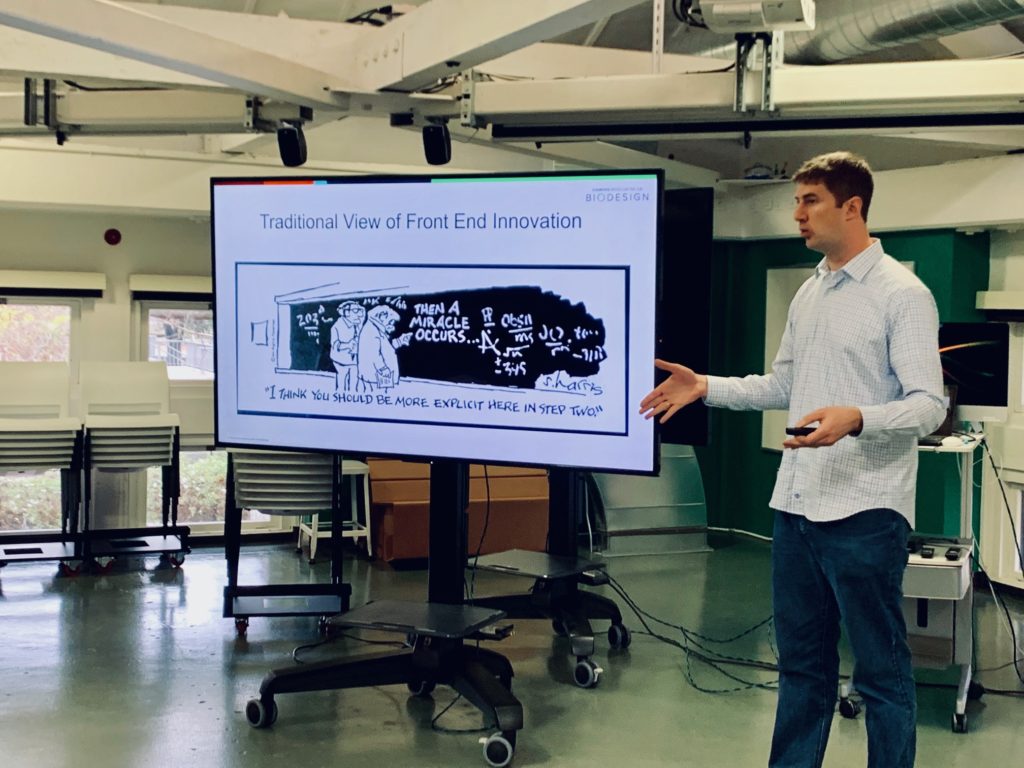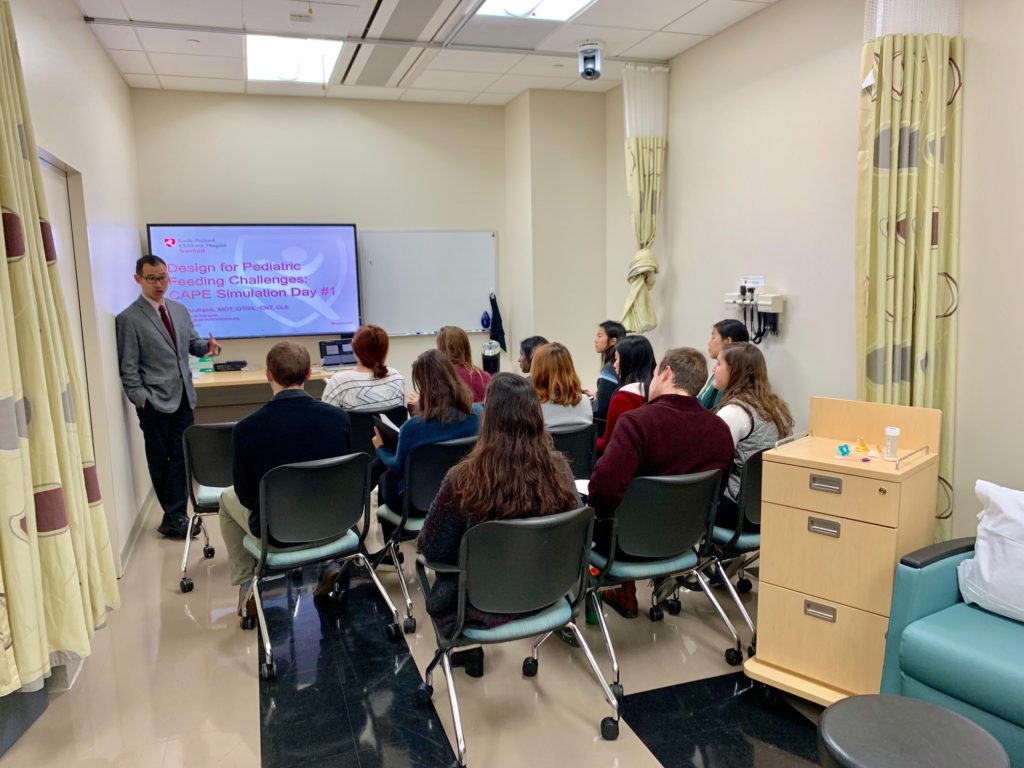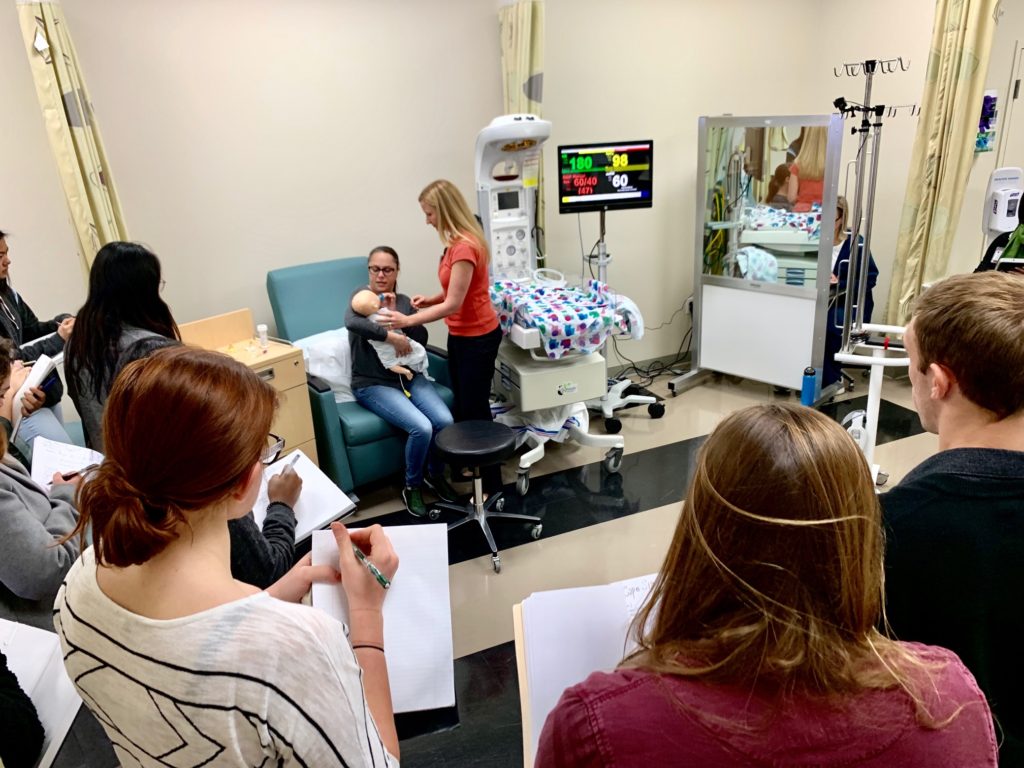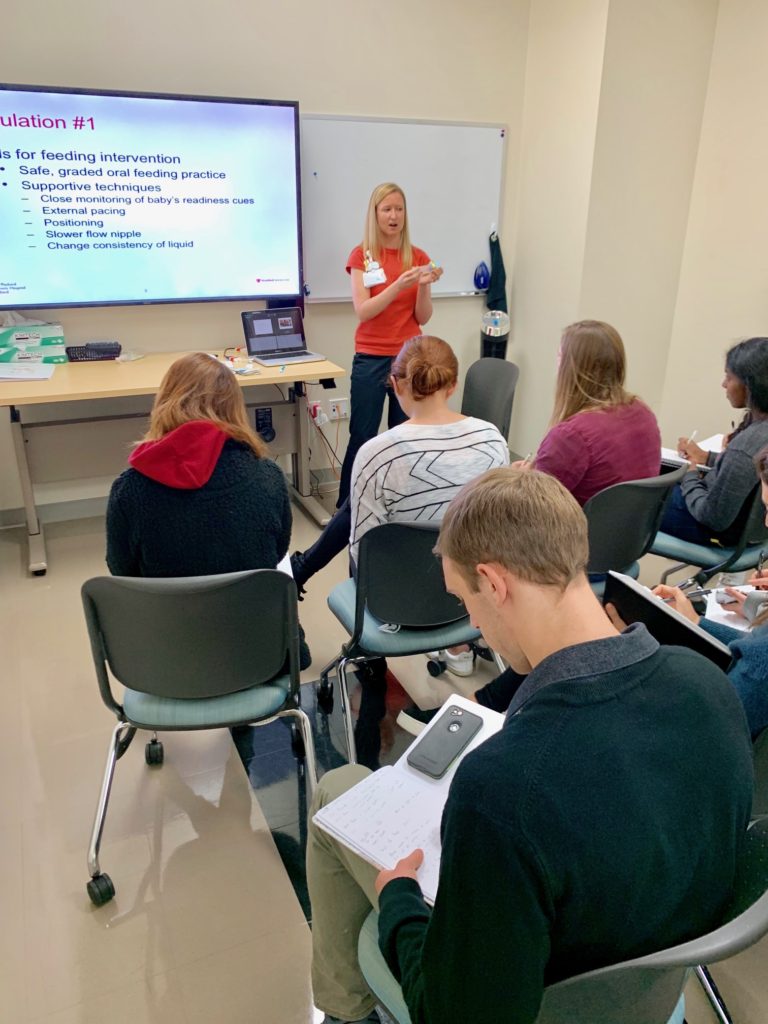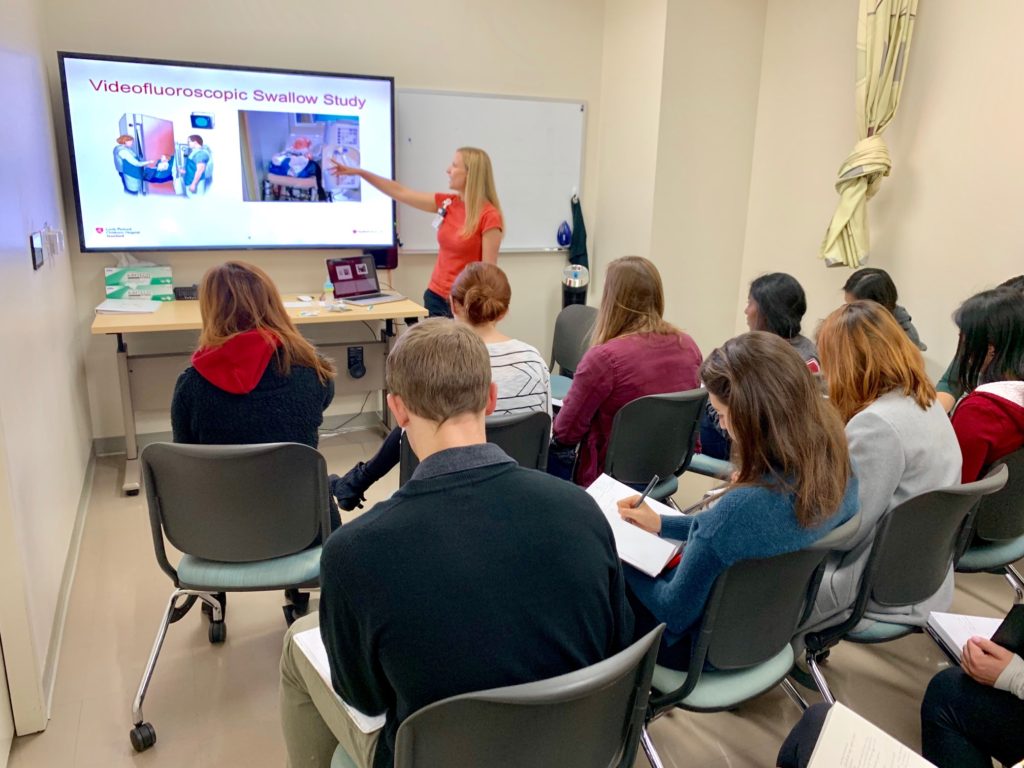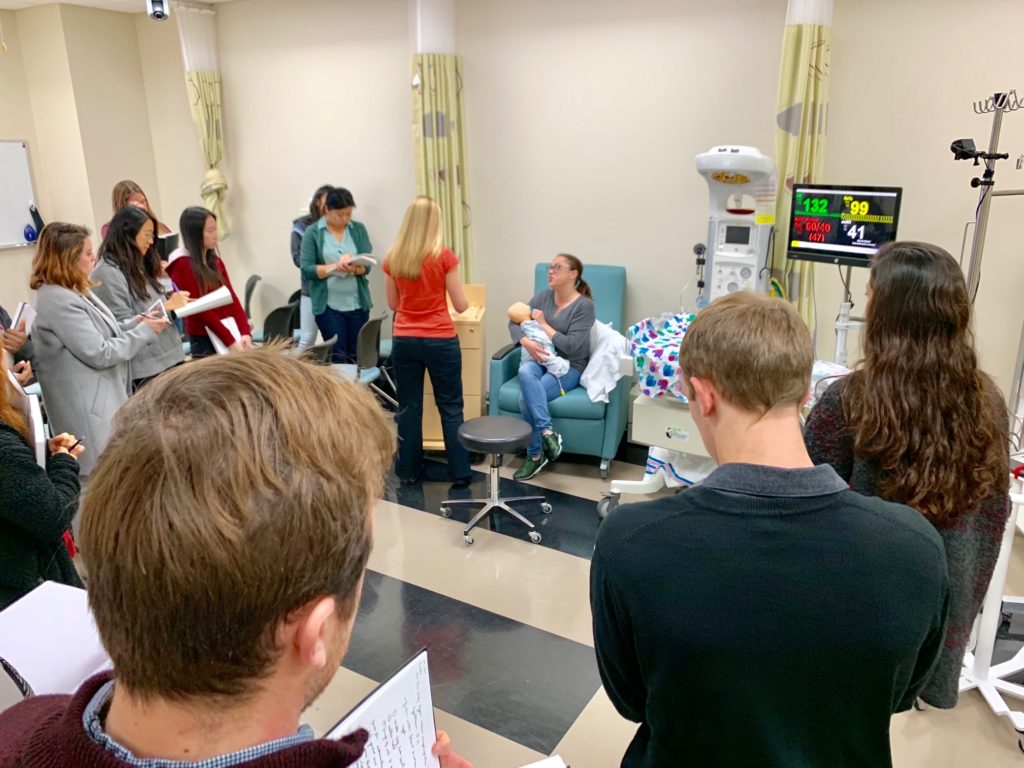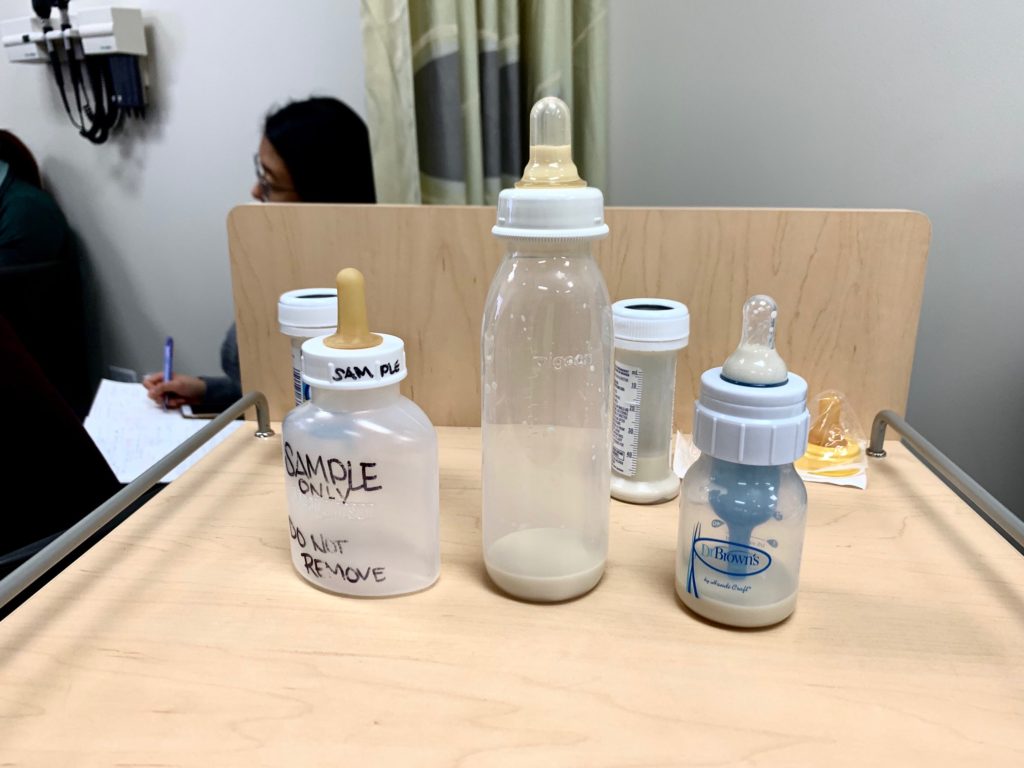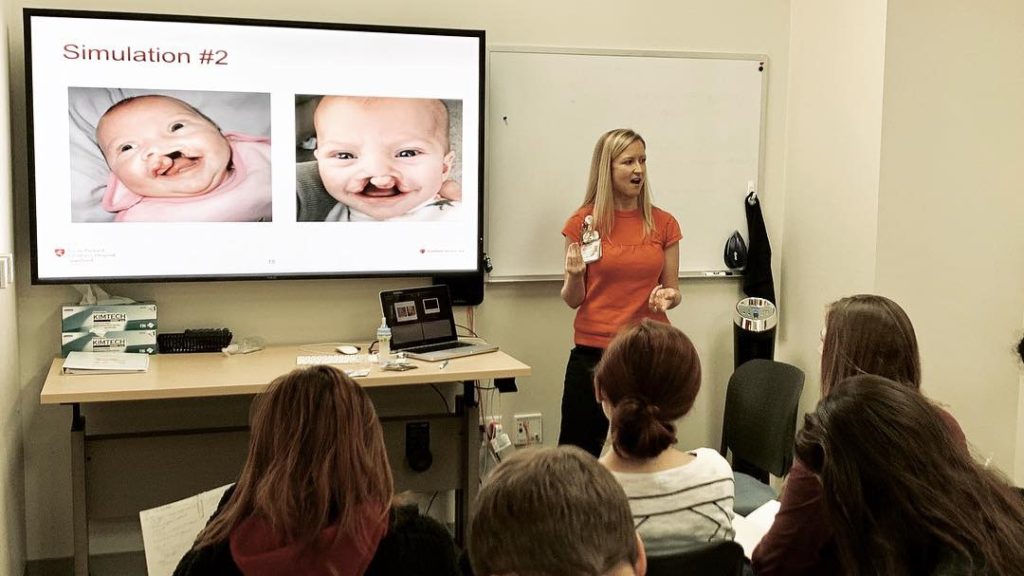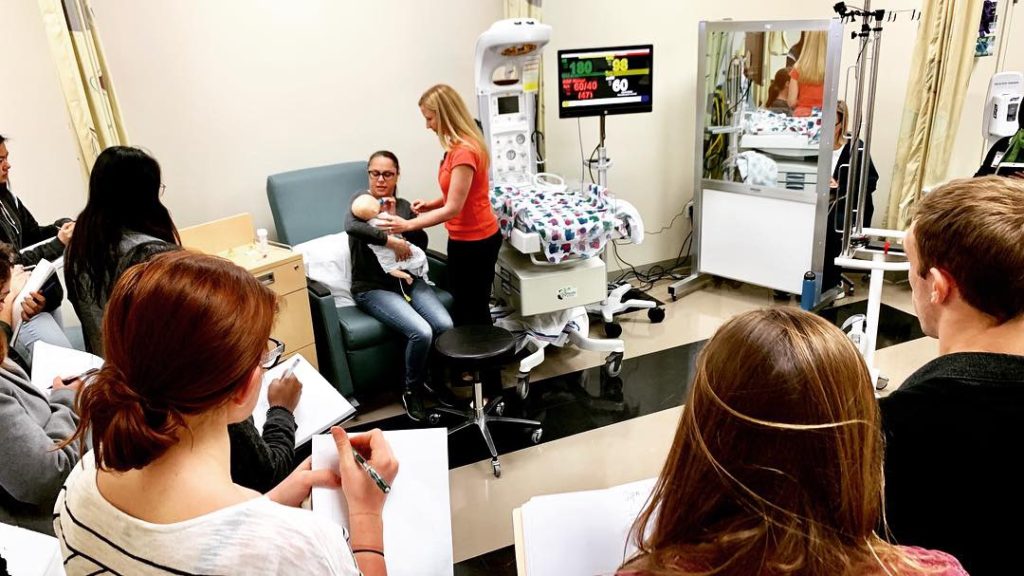CAPE Sims & Class Photos Design For Pediatric Feeding Challenges 2019
Jan. 22 CAPE Simulation Day:
Kelly Andrasik OT, Olivia Mayer, Dietician, IBCLC
*Verbal introduction for students about each scenario prior to simulation.
1) Full term baby with HIE, s/p therapeutic hypothermia – Baby is now 6 days old; Easily overwhelmed by stimuli, in a loud NICU room with lots of beeping, other crying babies, etc. Baby wakes up, very fussy and hard to console. This makes the mother also frazzled. Session is spent supporting baby to calm, while remaining awake, with a swaddle and soothing (state control is poor). Oral motor stim is utilized via Medipop (pacifier with small trough for milk) followed by bottle feeding trial. Some incoordination noted. (Kelly to bring Medipop, bottle, pacifier needed, Nicole to try and locate chairs with arms.)
2) Full term baby with cleft lip/palate – Adequate energy and arousal, however is struggling with appropriate nipple/bottle choice. OT arrives at bedside to find parents frustrated and confused, with five bottles present. Nurse gives summary on what has been tried so far and what is working vs not working. Education provided and feeding resumed with Dr. Brown specialty feeding system, with improvement, however baby is still overwhelmed.
Jan. 29 CAPE Simulation Day:
Olivia Mayer IBCLC,
Kelly Andrasik OT,
Standardized patient
*Verbal introduction for students about each scenario prior to simulation.
- Henry to do situation intro as neonatologist. Mom is in bed.
Mom getting her lactation consult on postpartum. 24 week old baby-Mother needs to know how to make milk. Drowsiness, IV access limits movement and pain form the incision first hour after birth. Olivia to talk about to talk about clogged milk ducts and mastitis in debrief session.
- Typical preterm baby with typical preterm feeding issues – An ex-24 weeker, who is now PMA 38 weeks. Still on oxygen via nasal cannula. Poor endurance and some oral motor/swallowing incoordination. Baby nicely awoke with cares by the mother, who I am preparing to work with on bottle feeding. The nurse is prepping the bottle, however it is taking a while to warm. While waiting, I work with the baby and mother on oral motor stim, but the baby is quickly losing steam and demonstrating some stress cues and disorganization, while waiting for the warmed milk. We start the feeding, side-lying position, with external pacing, with the baby taking approximately 50% by mouth. I support mother to hold the baby skin to skin, while he receives the tube feeding. NG tubes and nasal cannula need.
Simulation #1 Photos:
Simulation #2 Photos:
Feb. 5 CAPE Simulation Day:
(Jan comes to film and ask students their thoughts on the simulations)
Henry Lee, MD
Olivia Mayer IBCLC
Standardized Patient
Male Interpreter
*Verbal introduction for students about each scenario prior to simulation.
- After vaginal delivery…Mother and IBCLC with a language barrier. Show phone (voice only) interpreter situation, face-time interpreter situation and male interpreter behind a screen.
- A former preterm baby or a baby with weight gain problems, or a mom with production problems and we try a Supplemental Nursing System (SNS) using a nipple shield and placing the end of the tube right at mom’s breast, getting it to stay in place while trying to get baby to latch, and where/how to hold the syringe higher than mom for gravity to help the supplemental feeding (pumped milk or formula) go down the tube. In the sim the milk needs to spill.
Simulation #1 Photos:
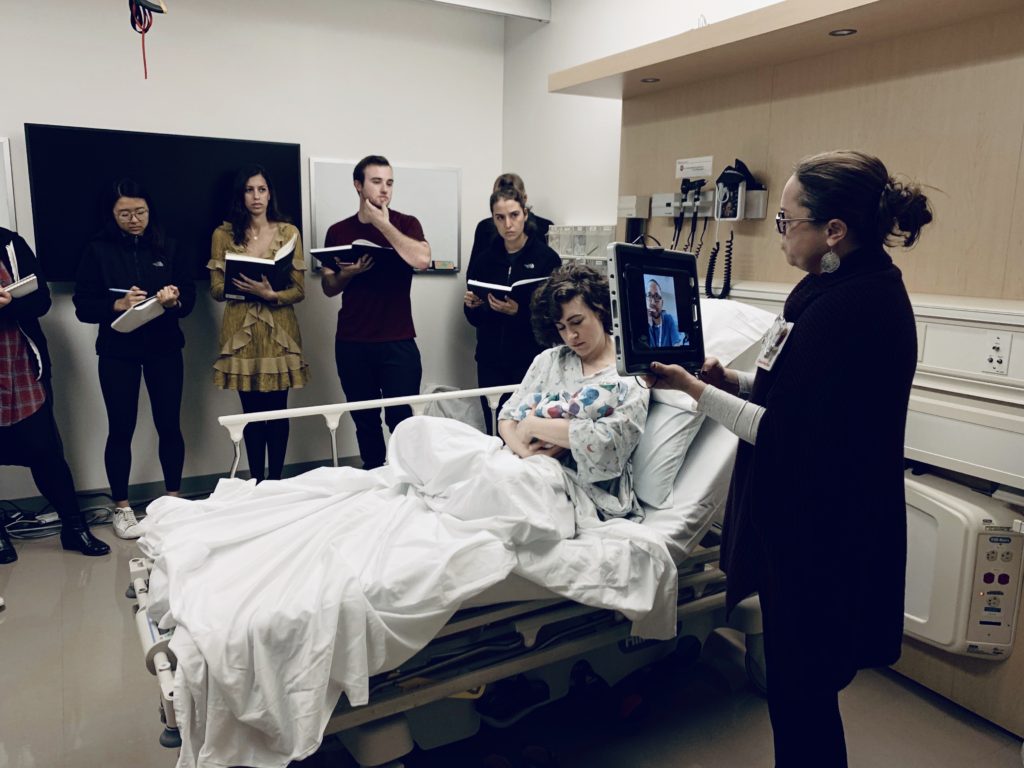
Using the iPad to get a translator on FaceTime but patient does not want the translator see her (understandably) during the consult.
Simulation #2 Photos:
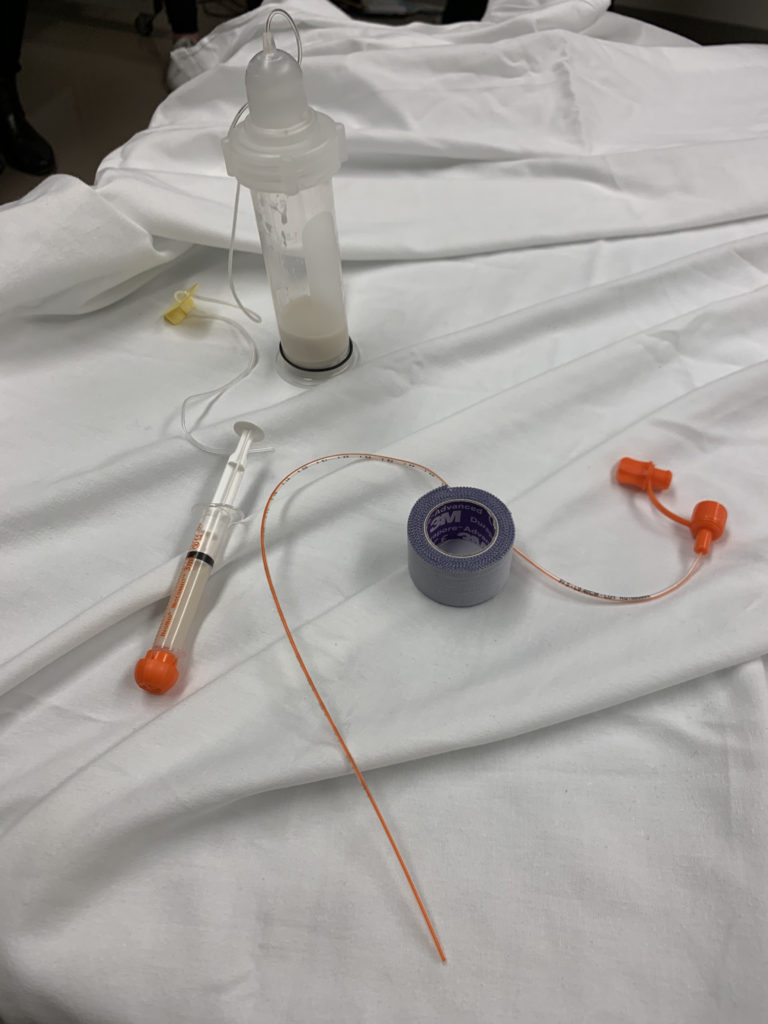
SNS components
Class Photos:

